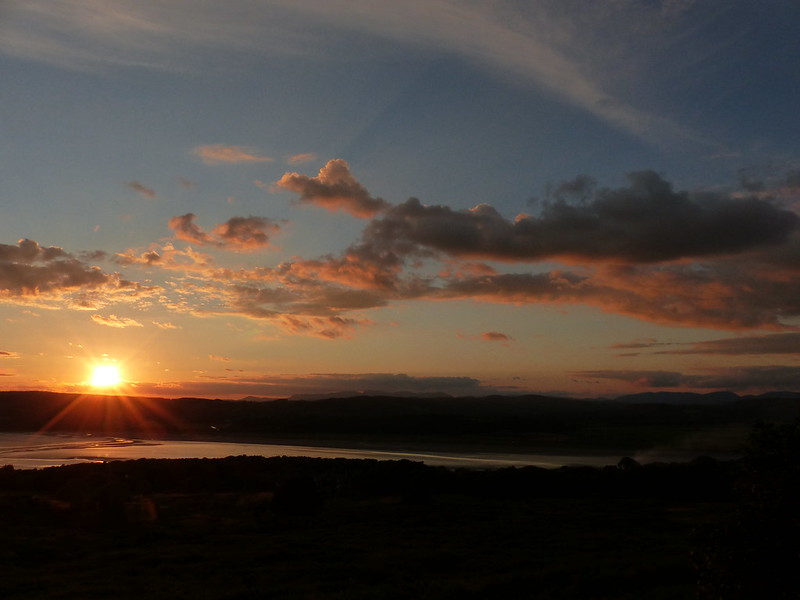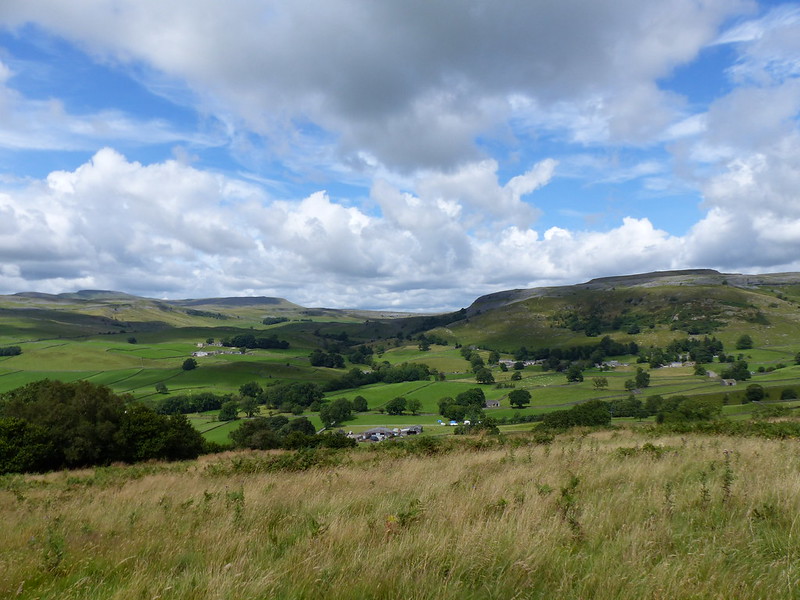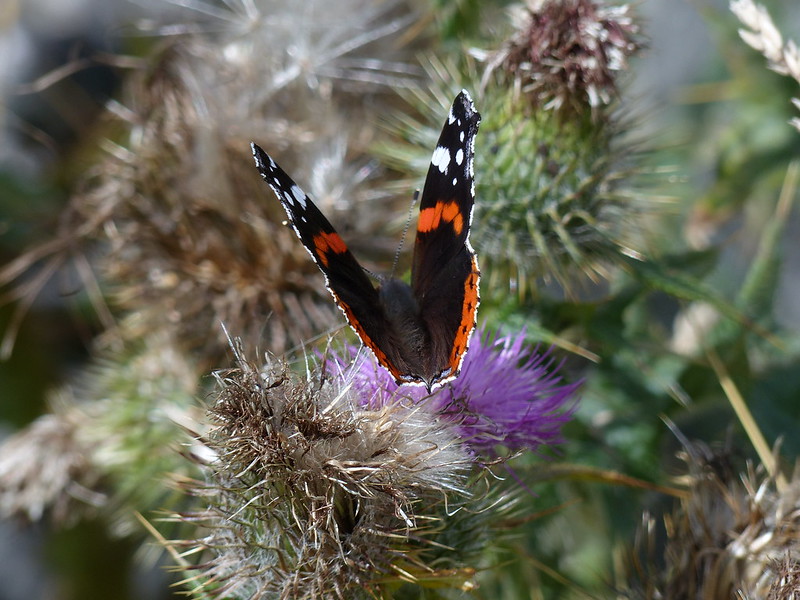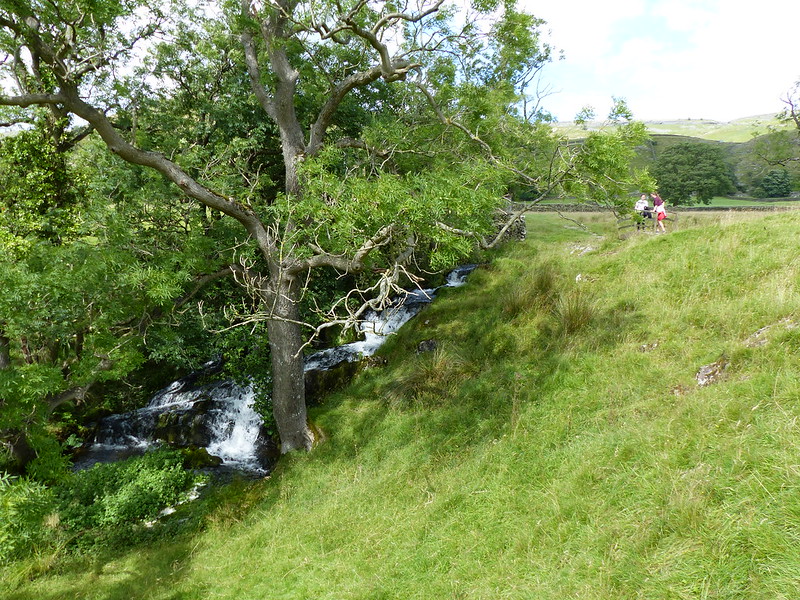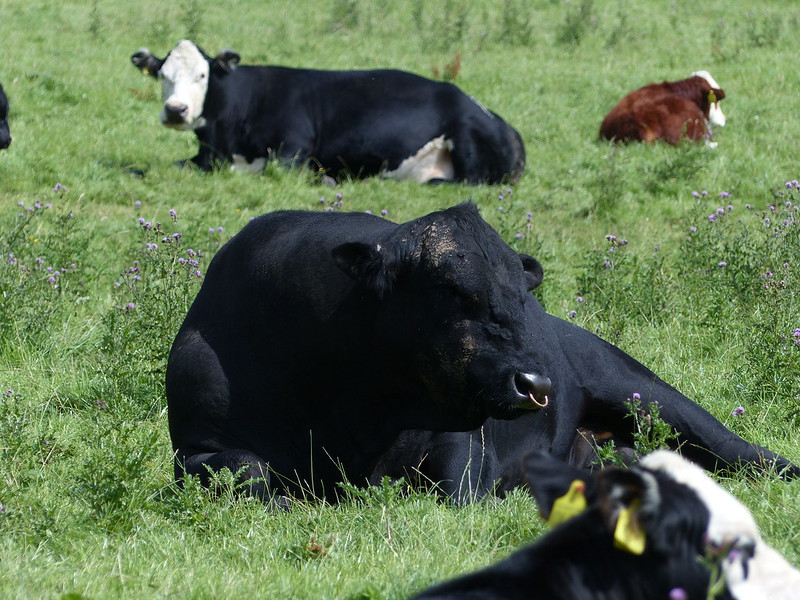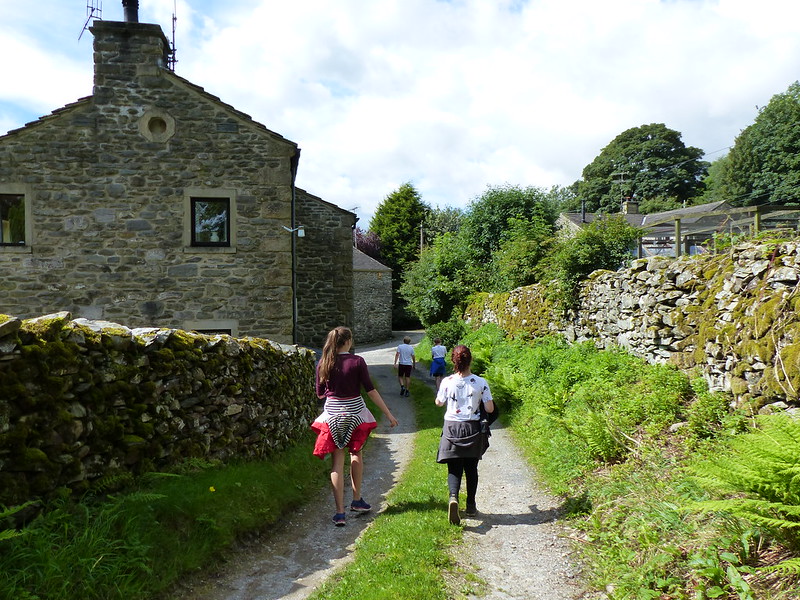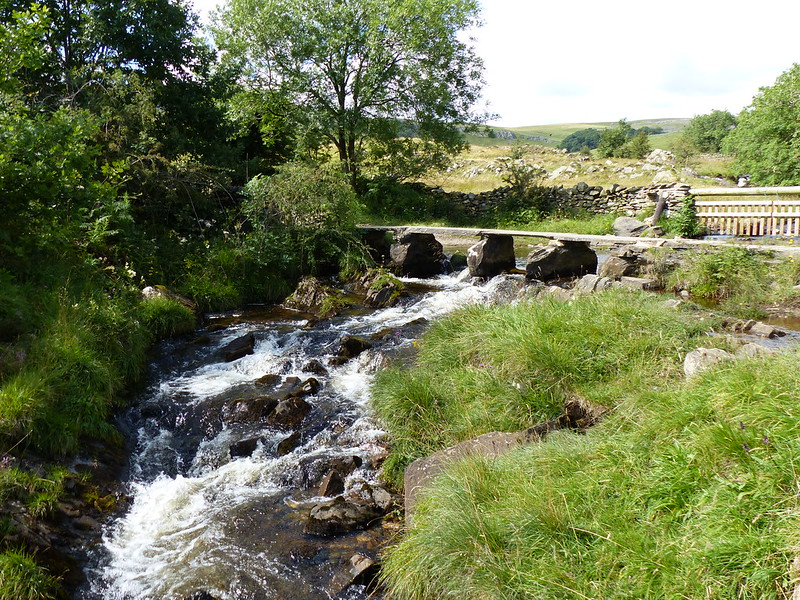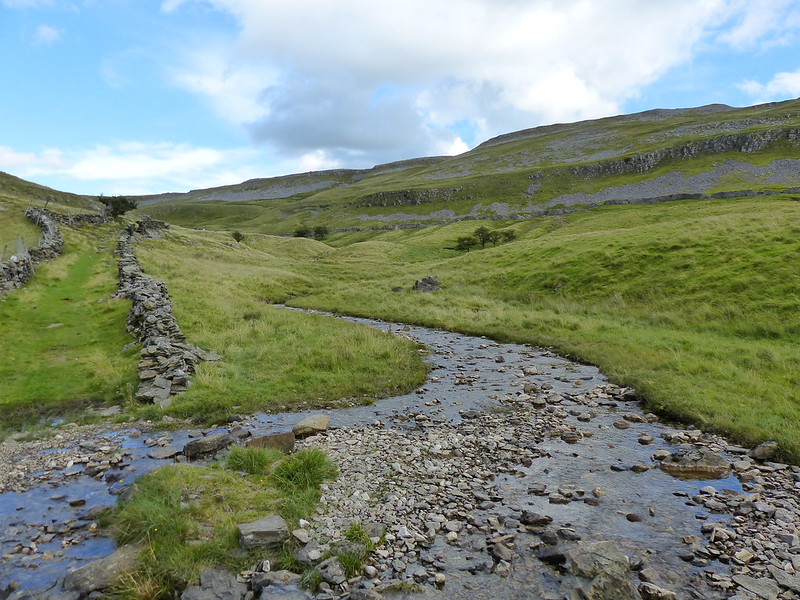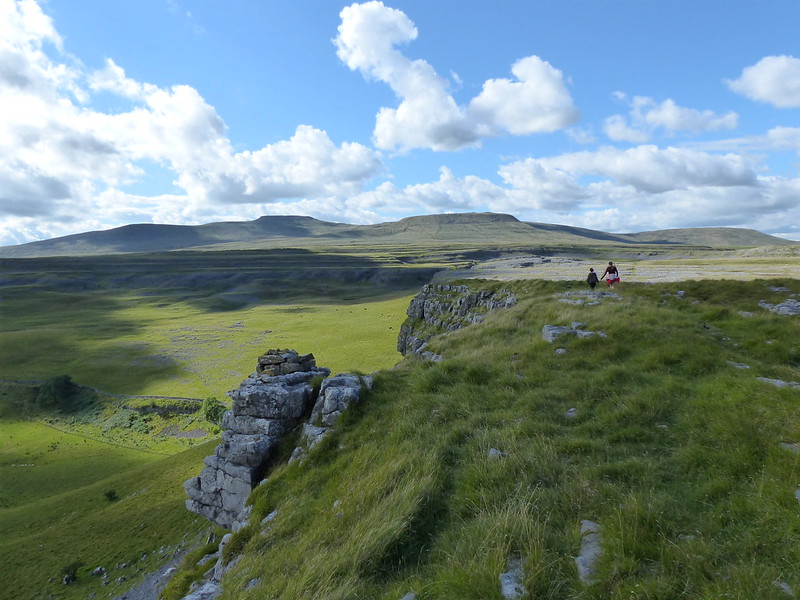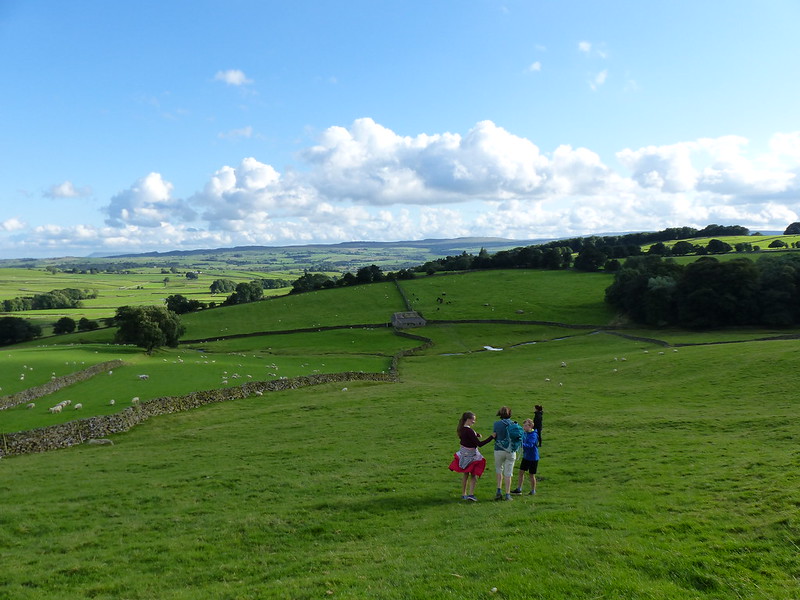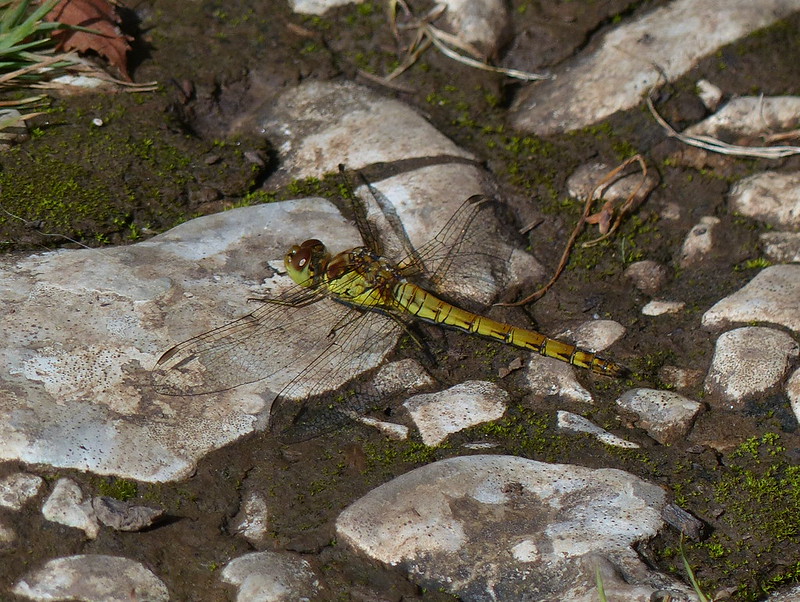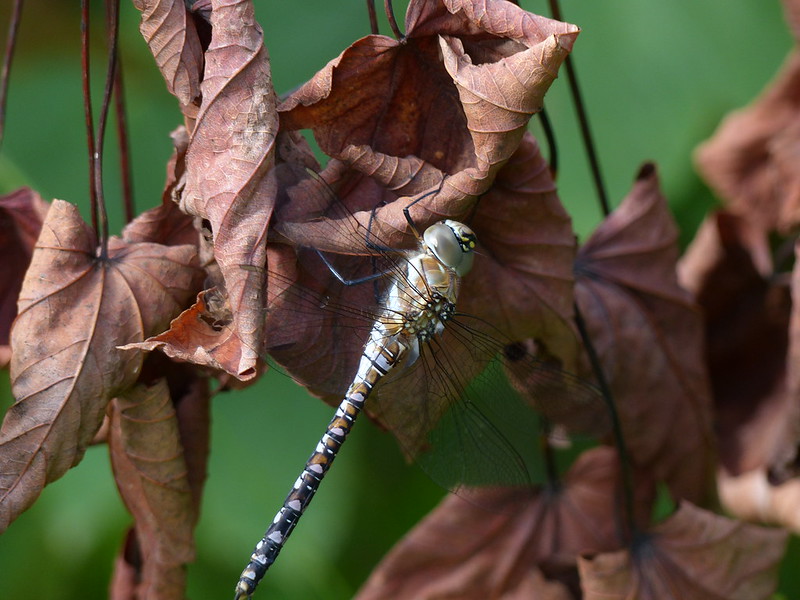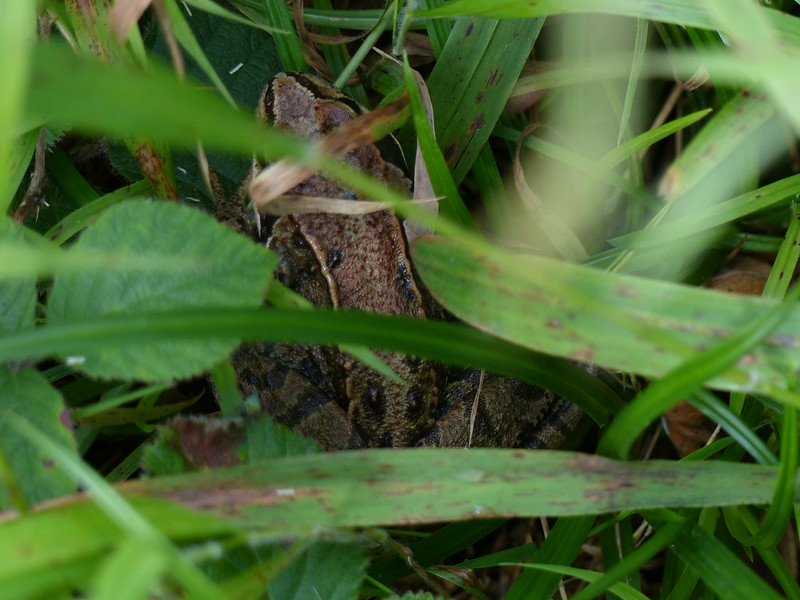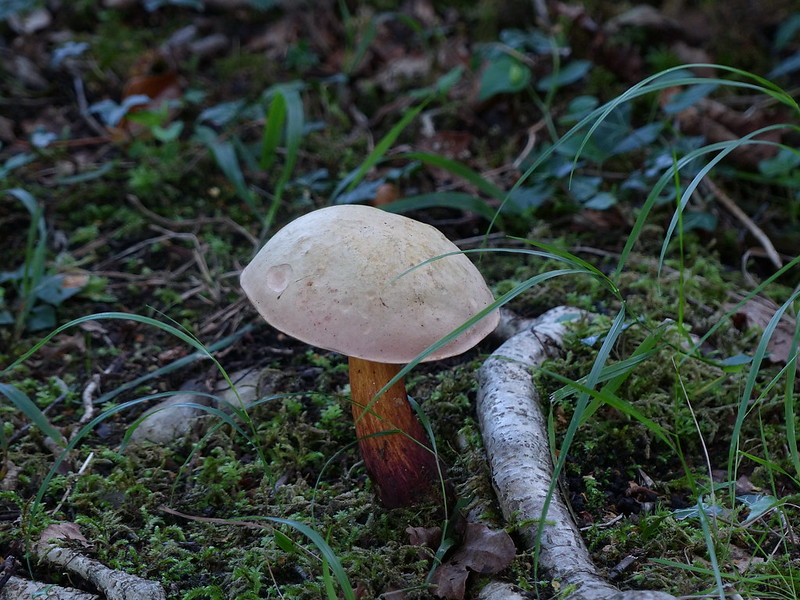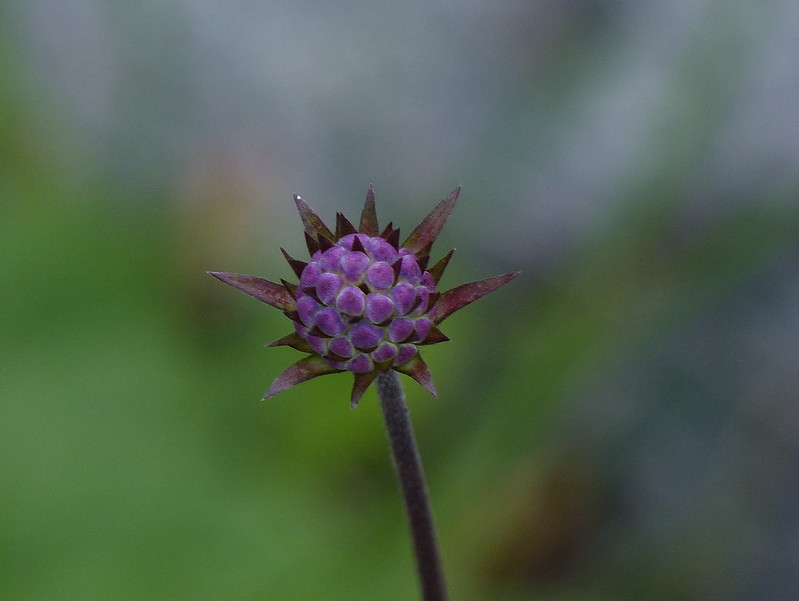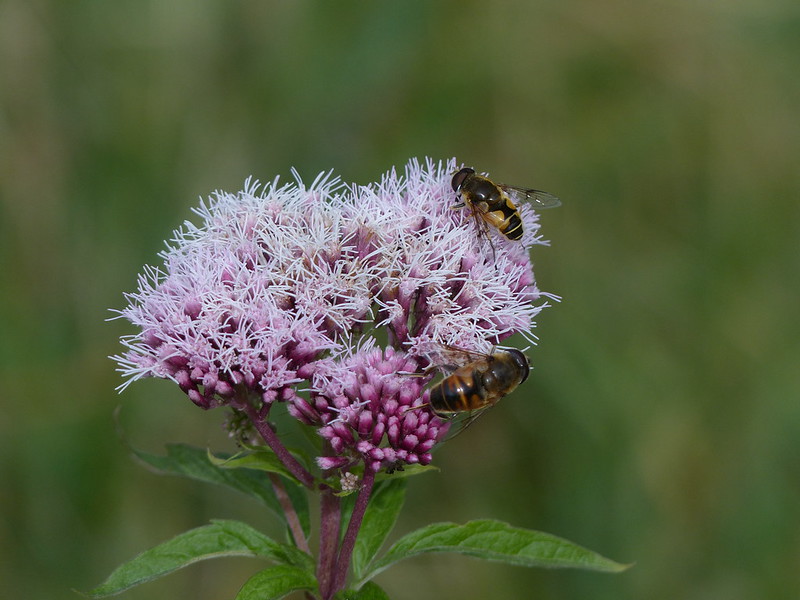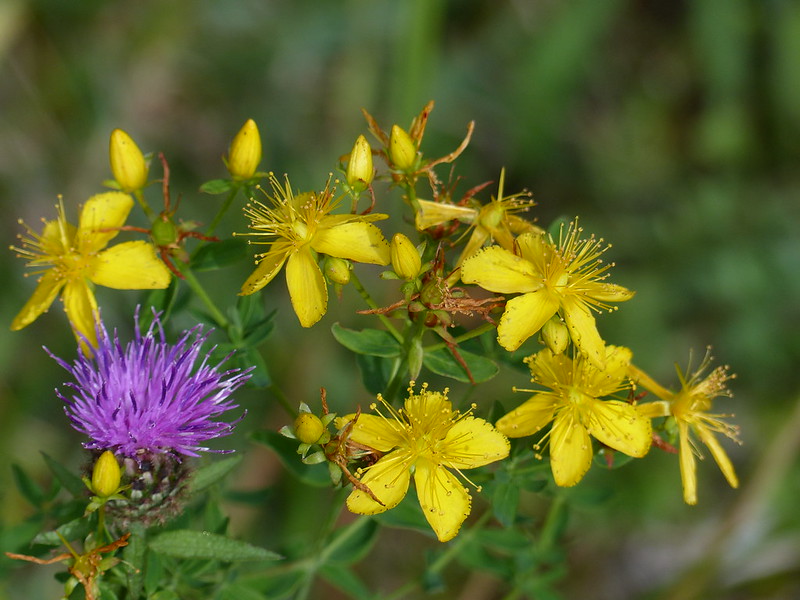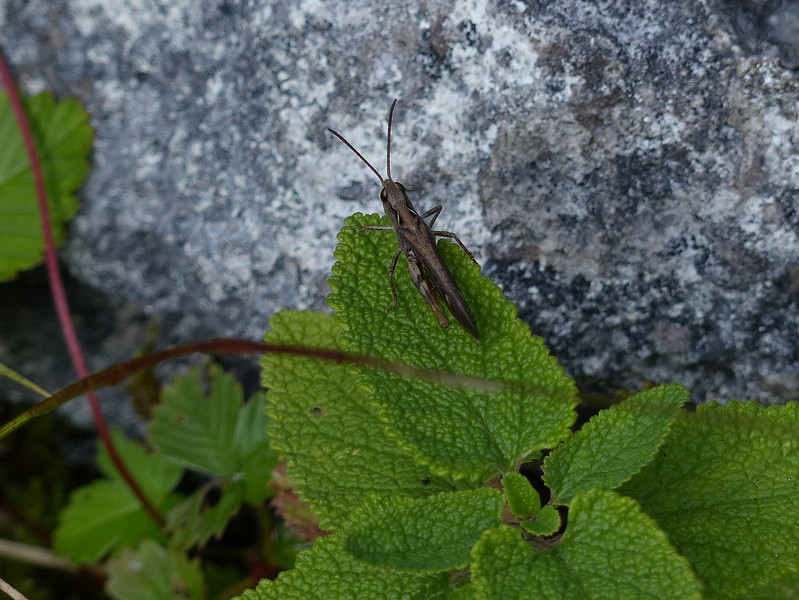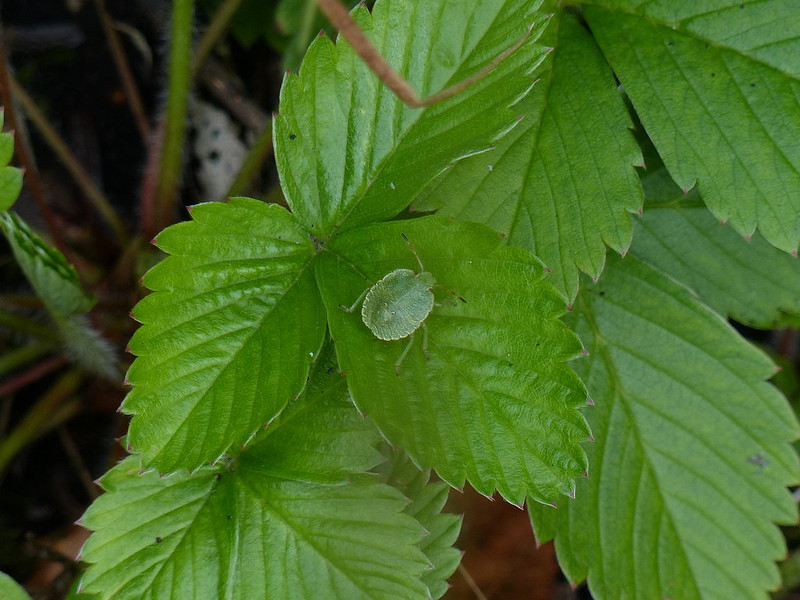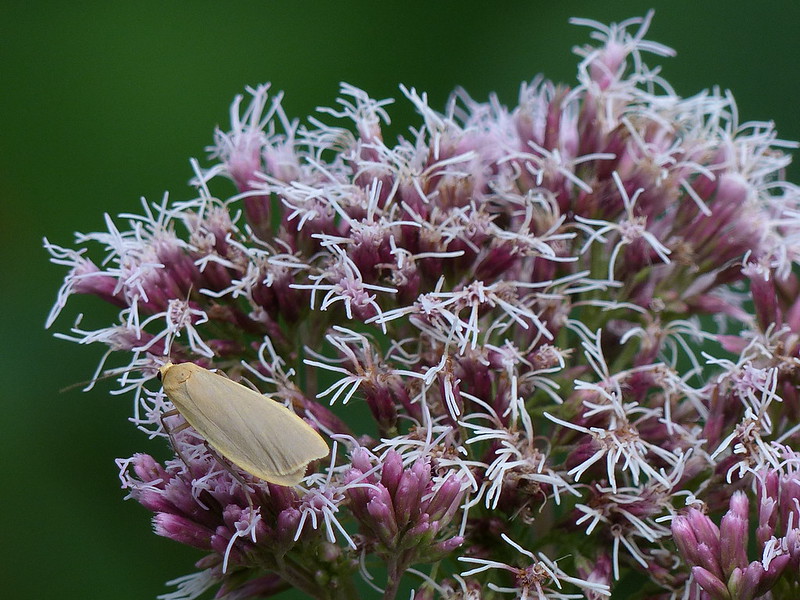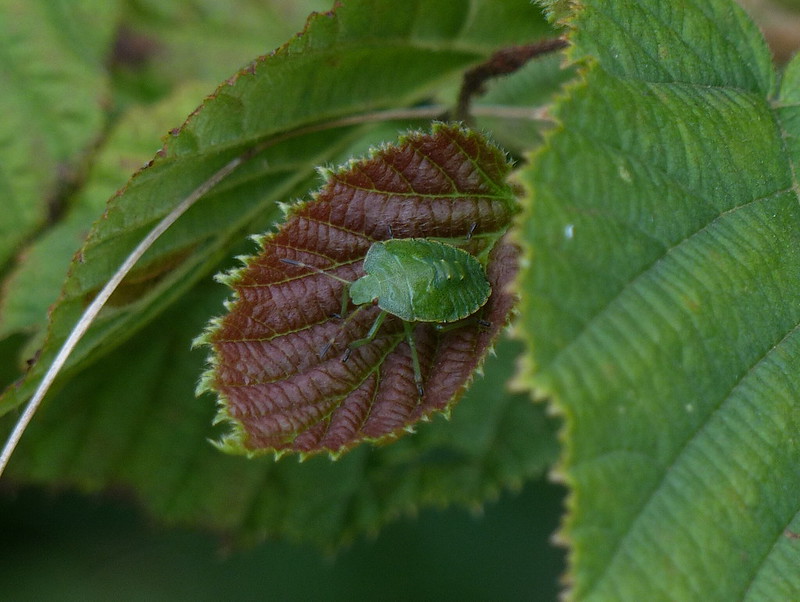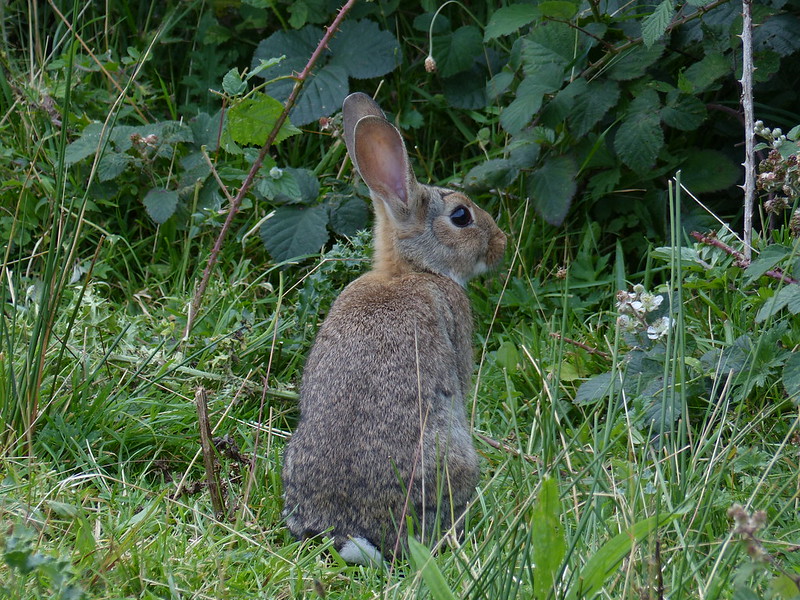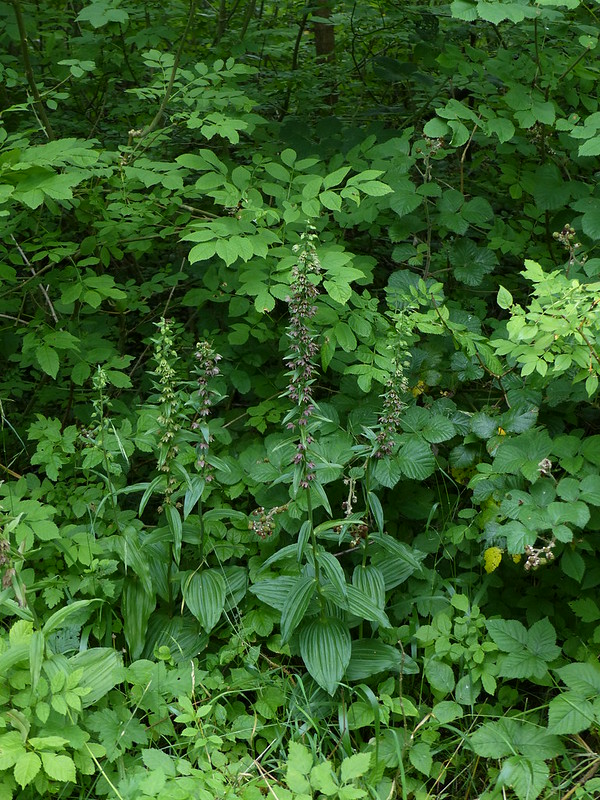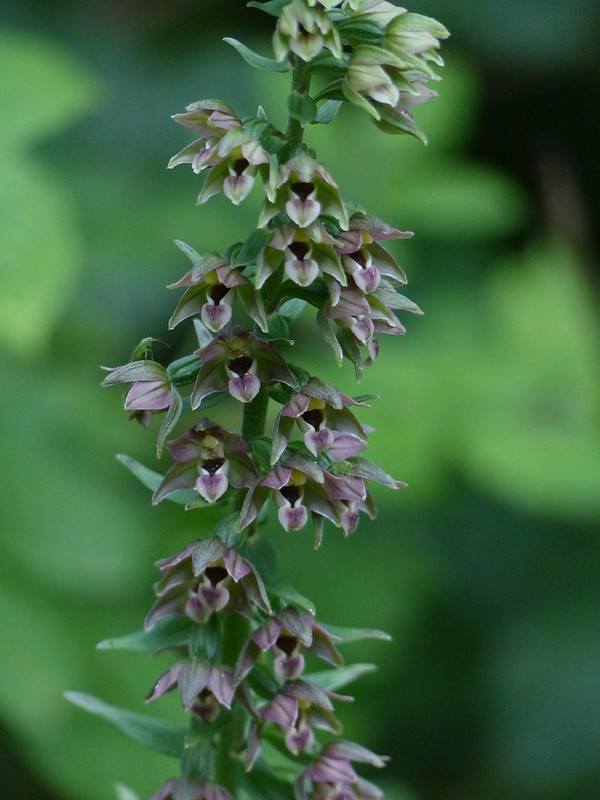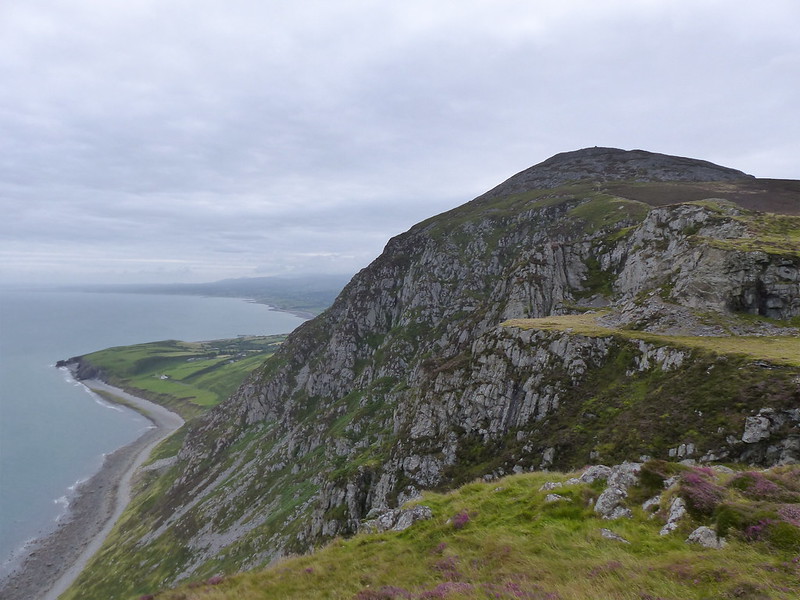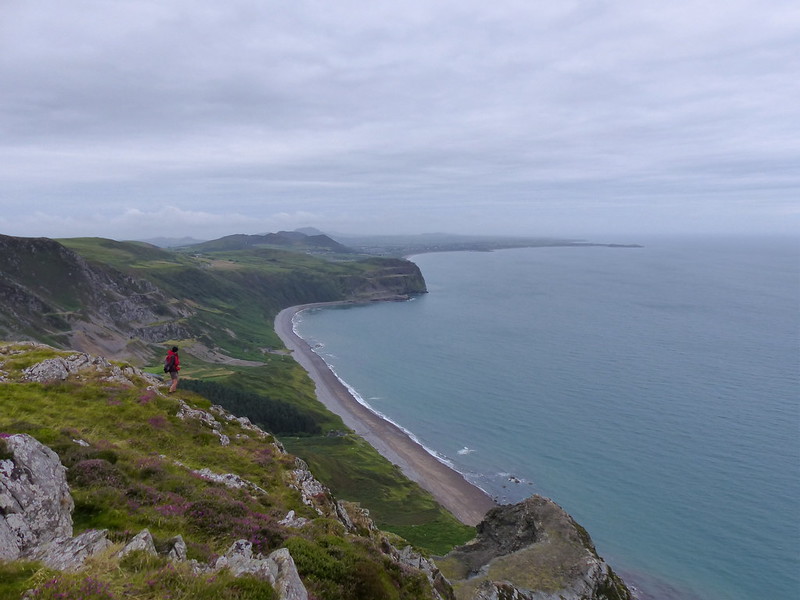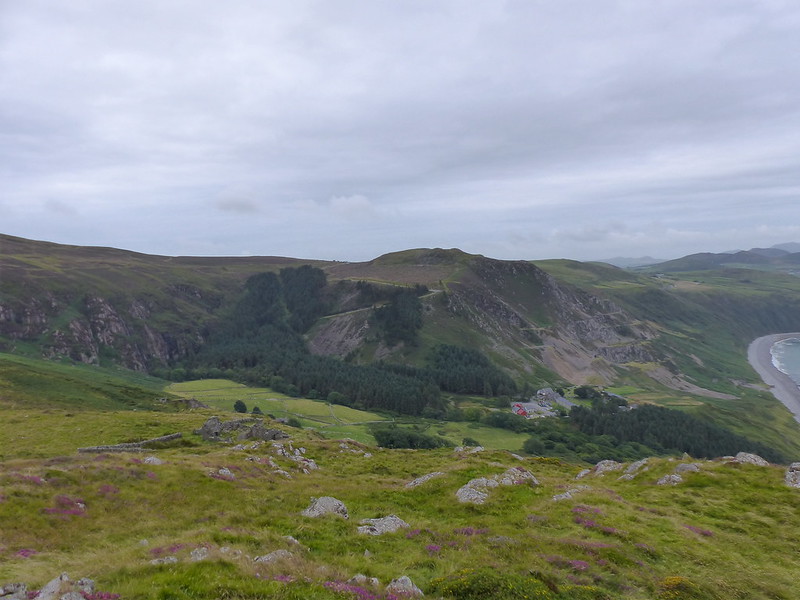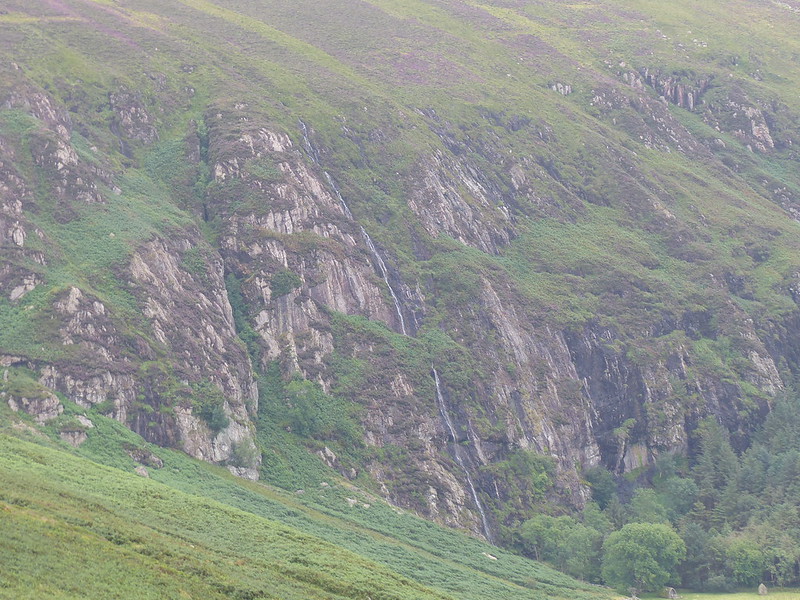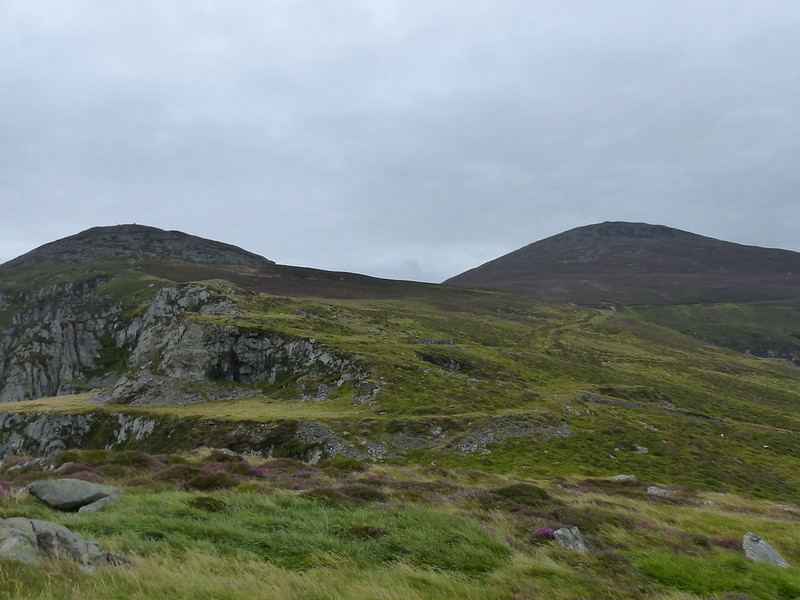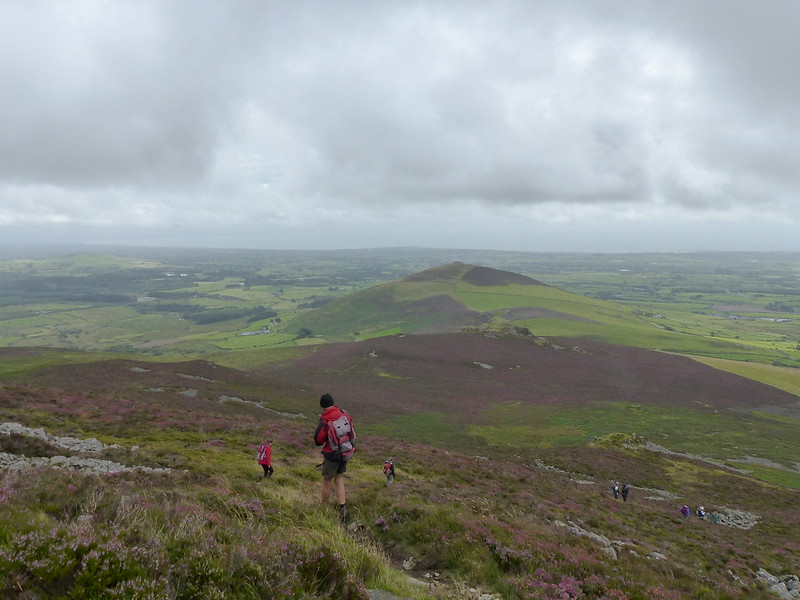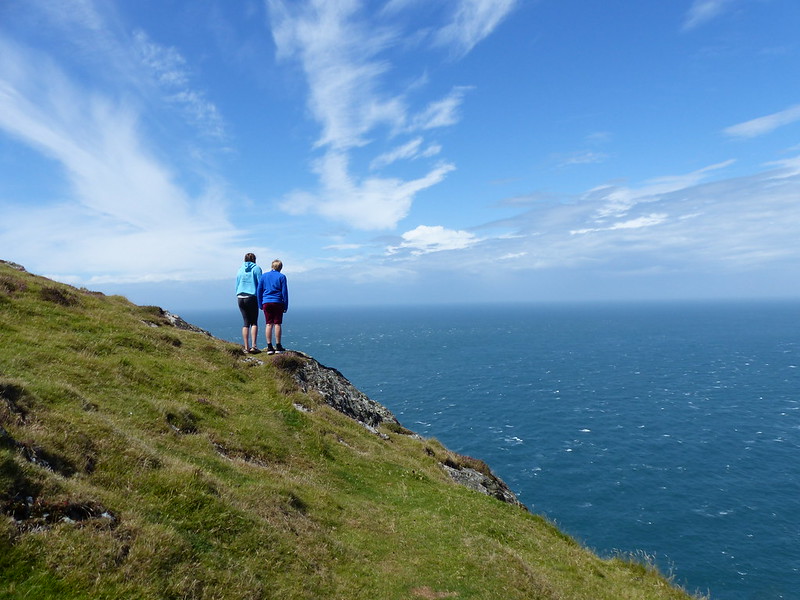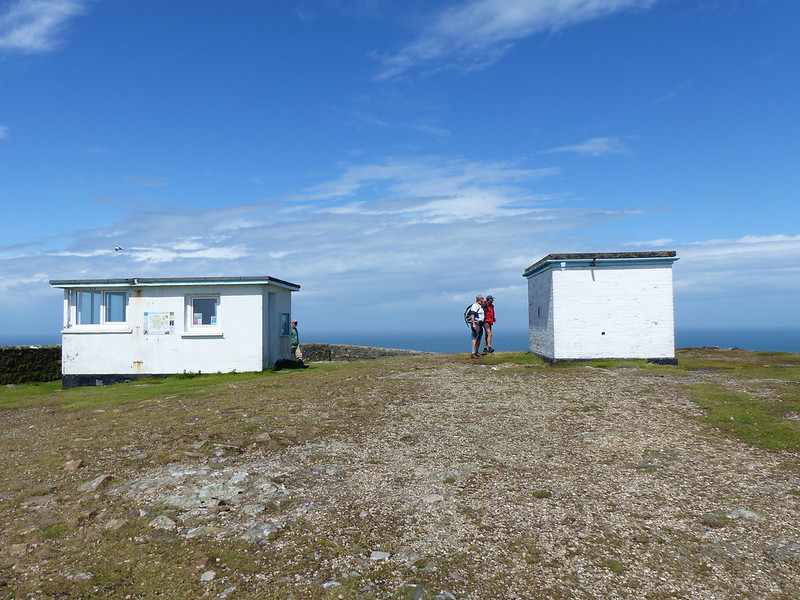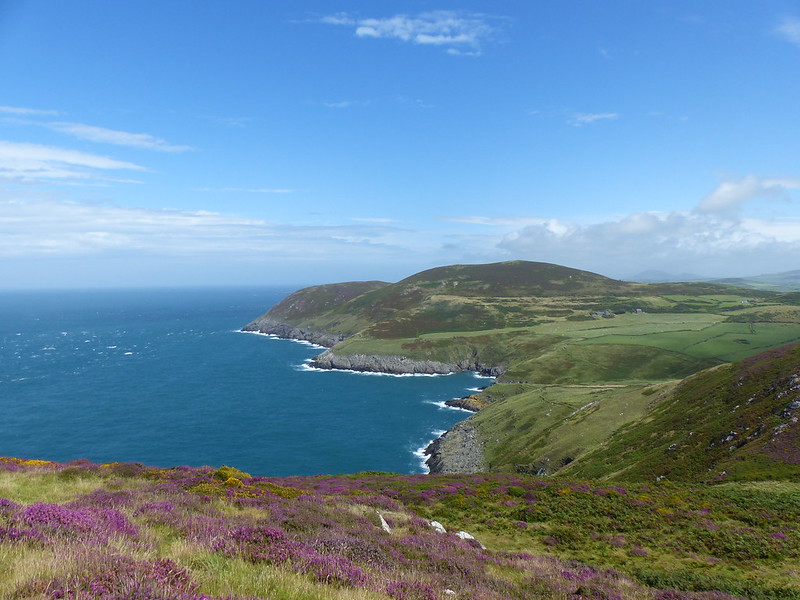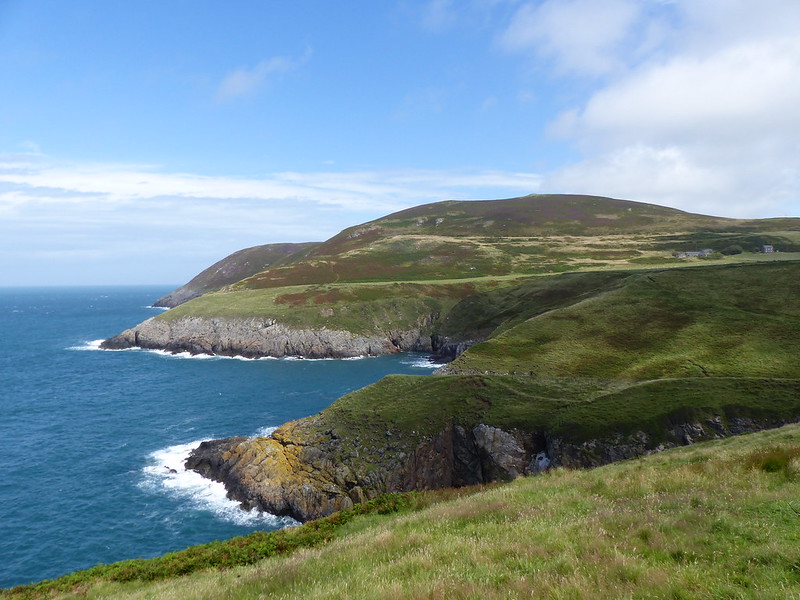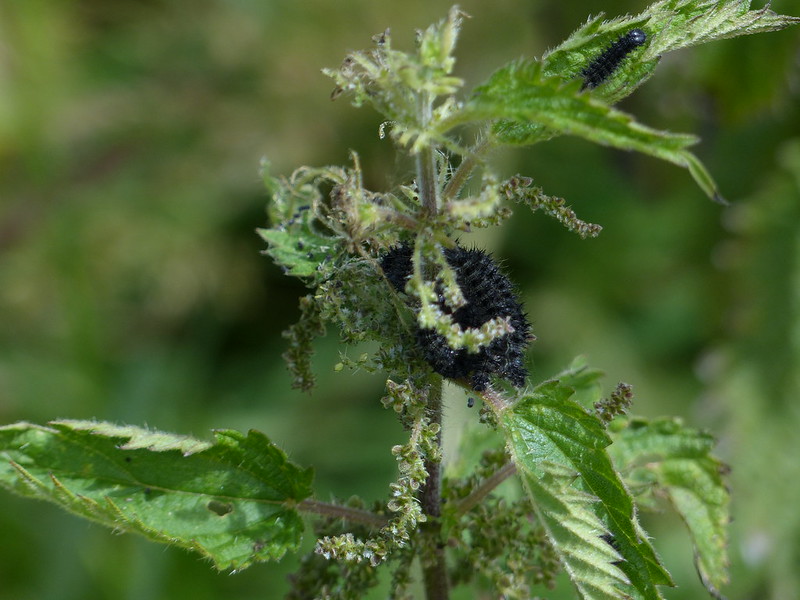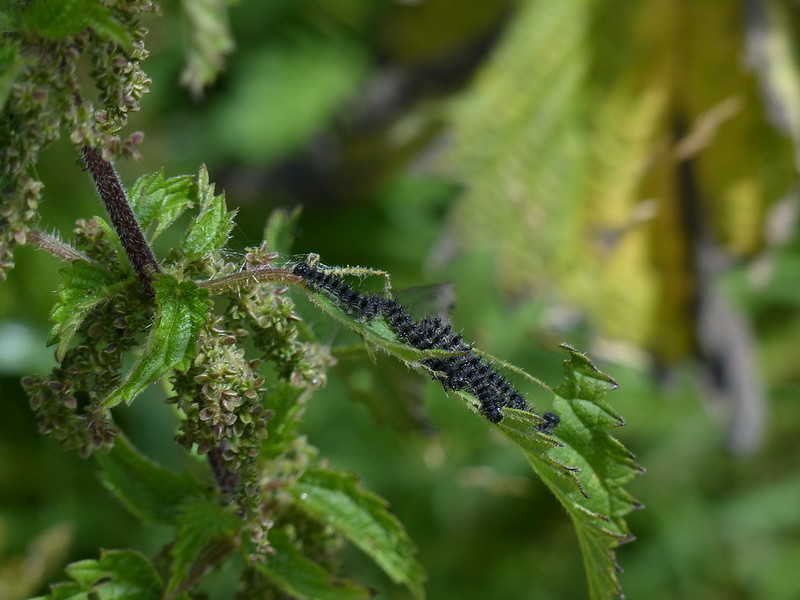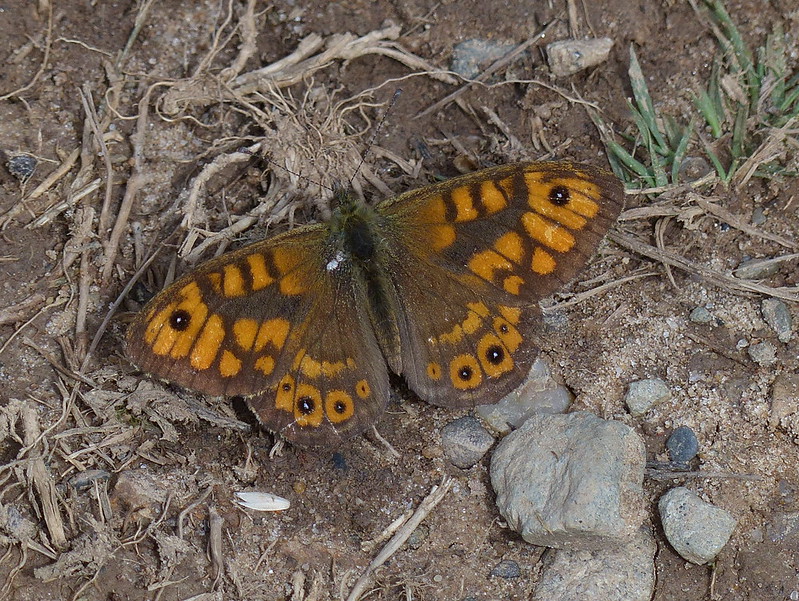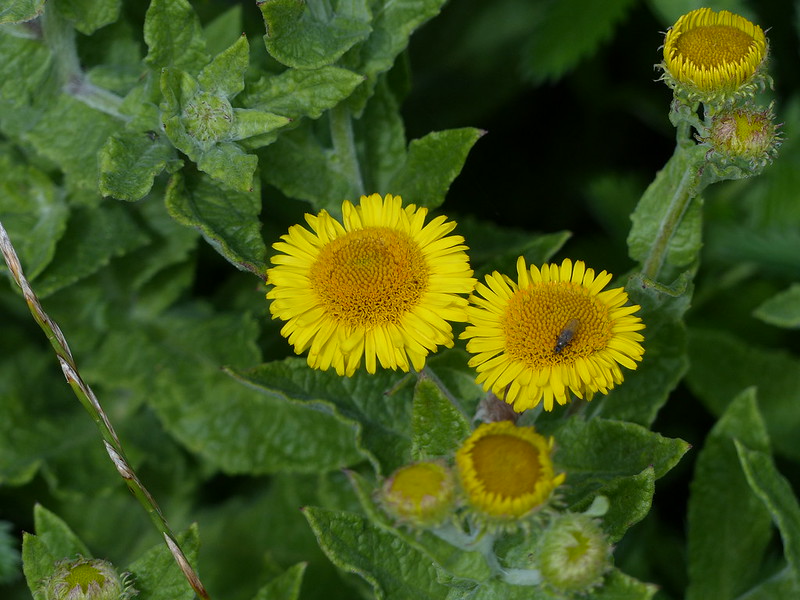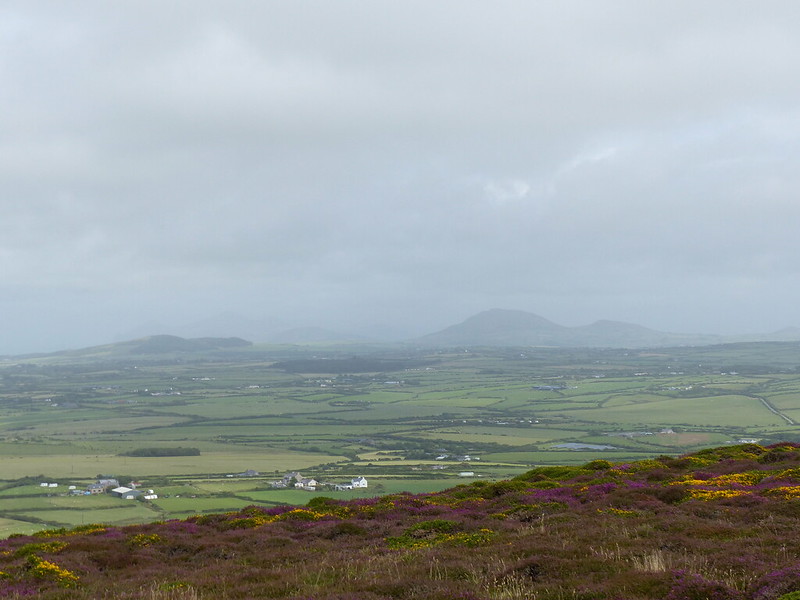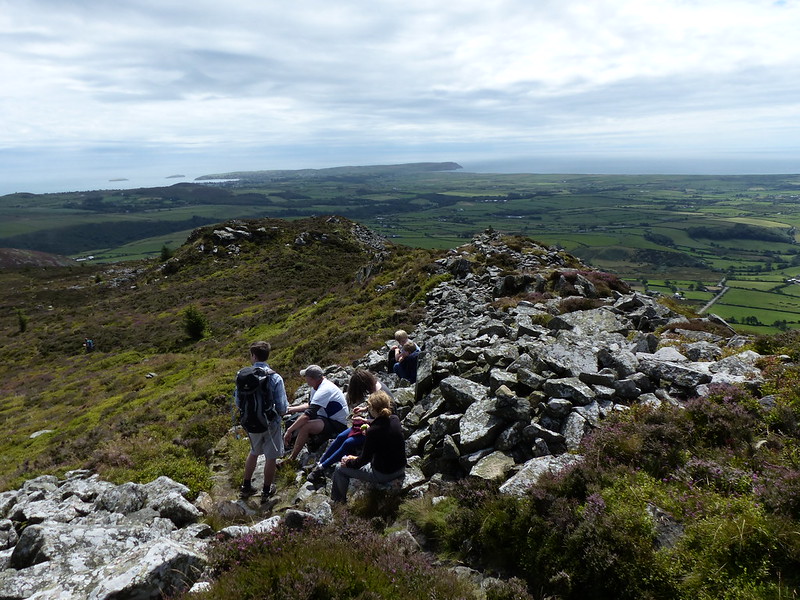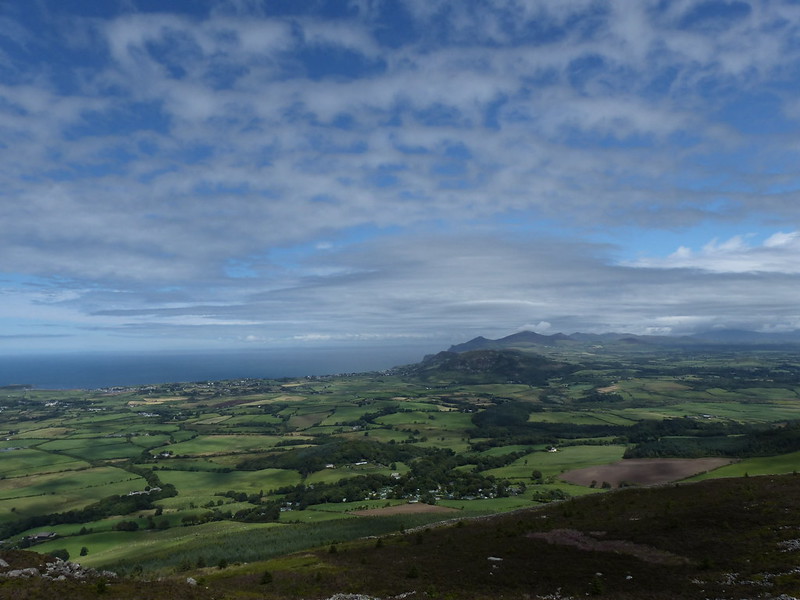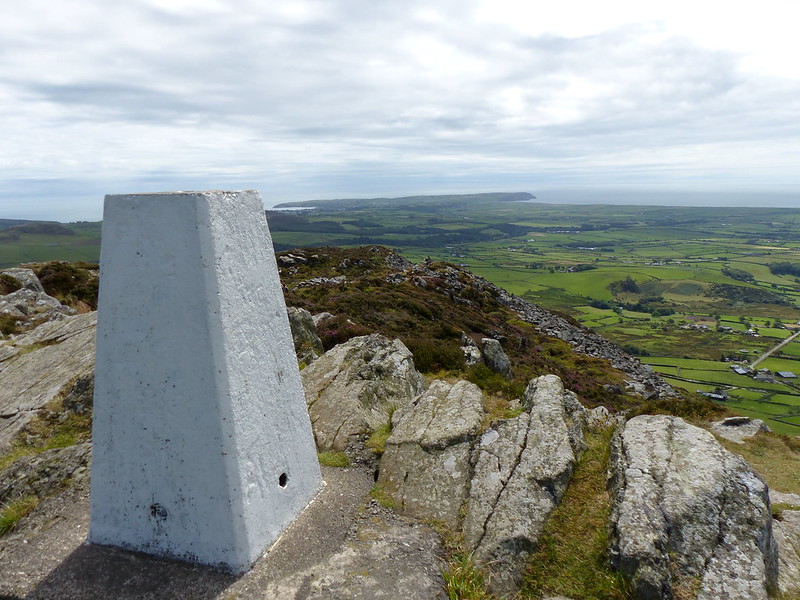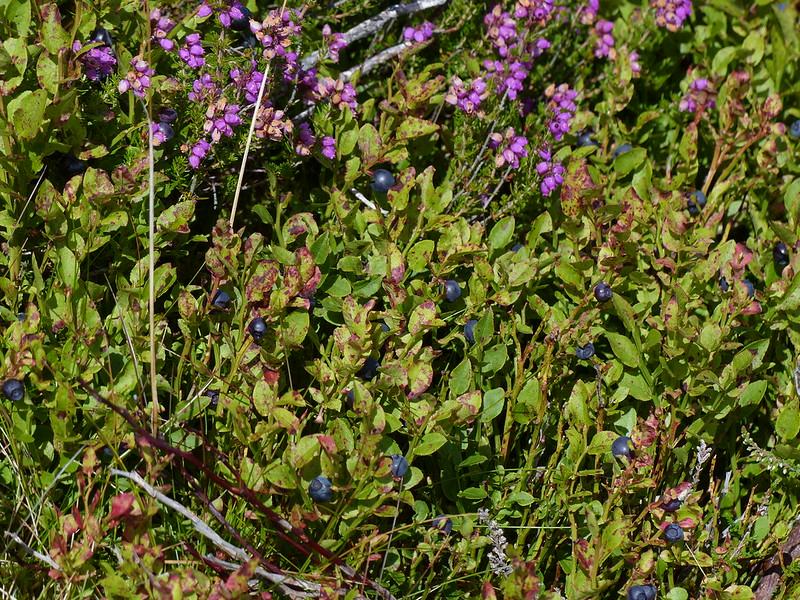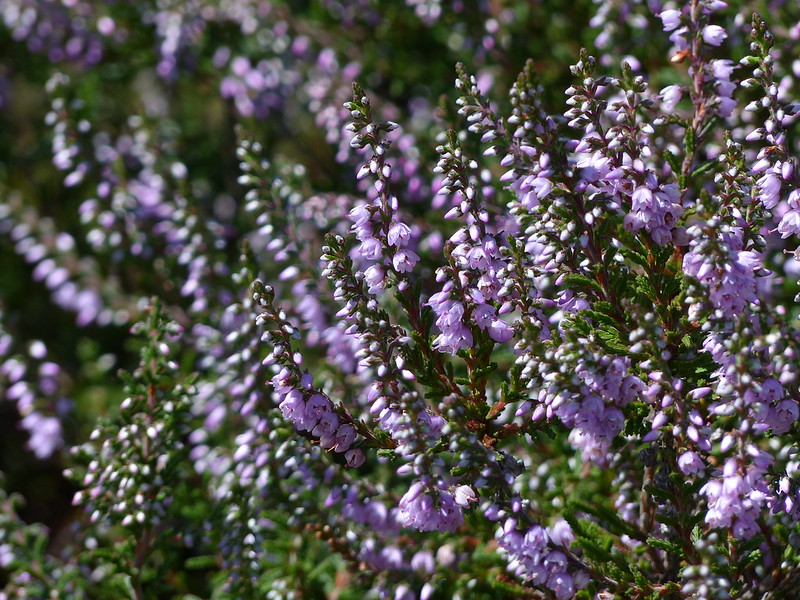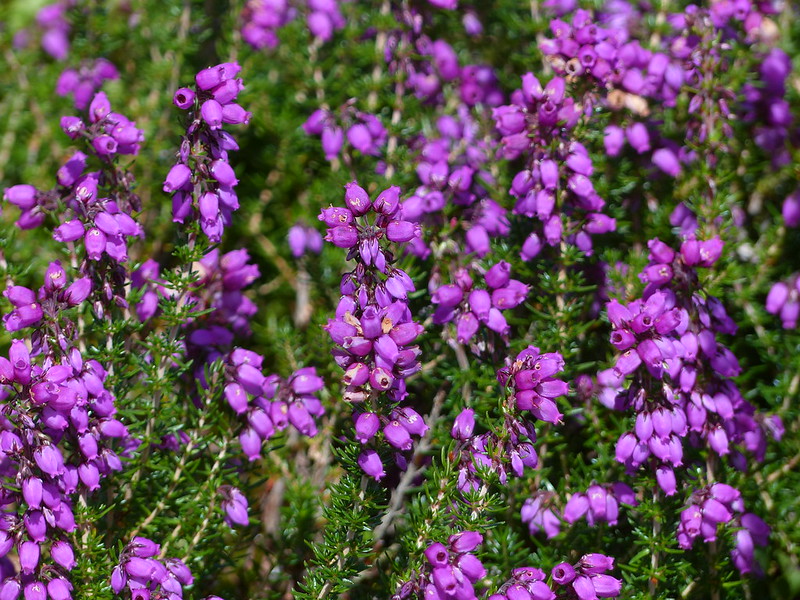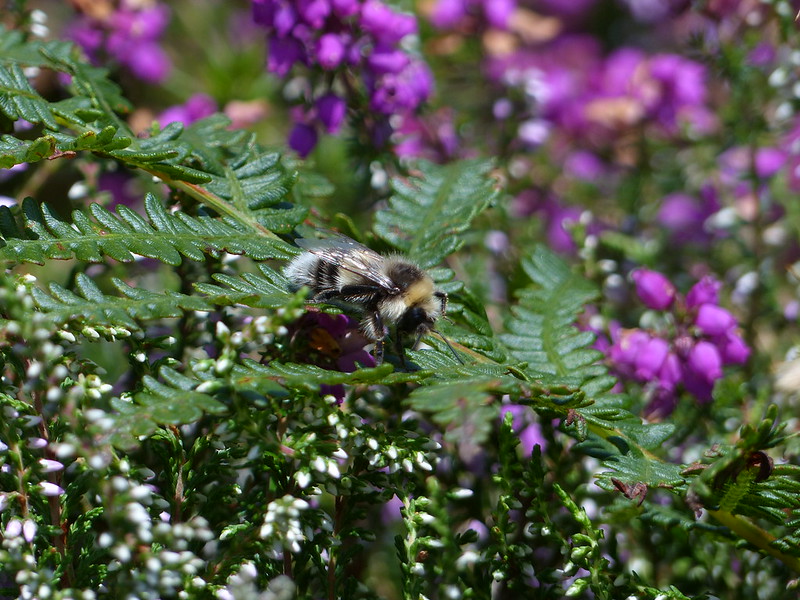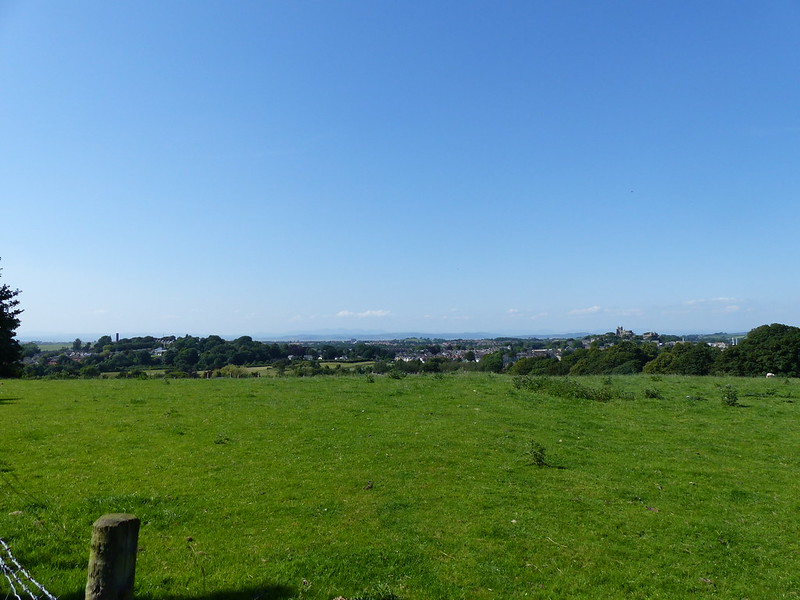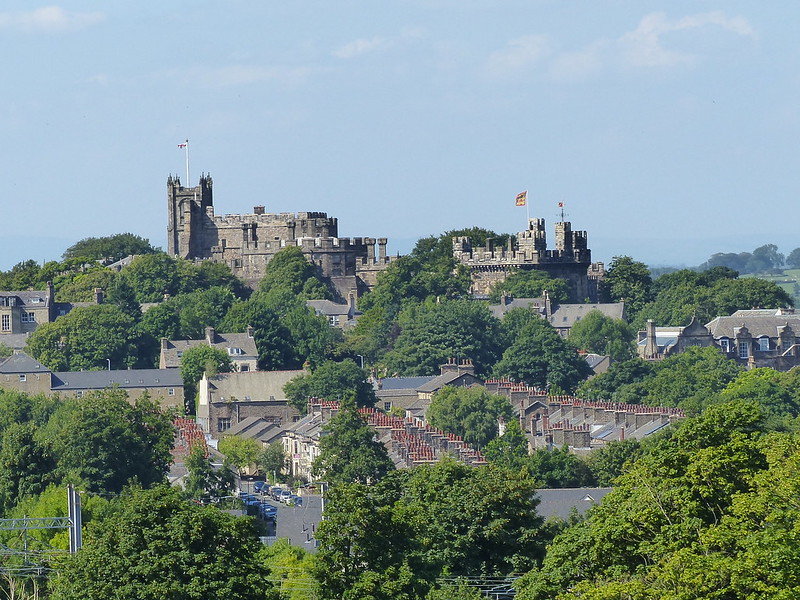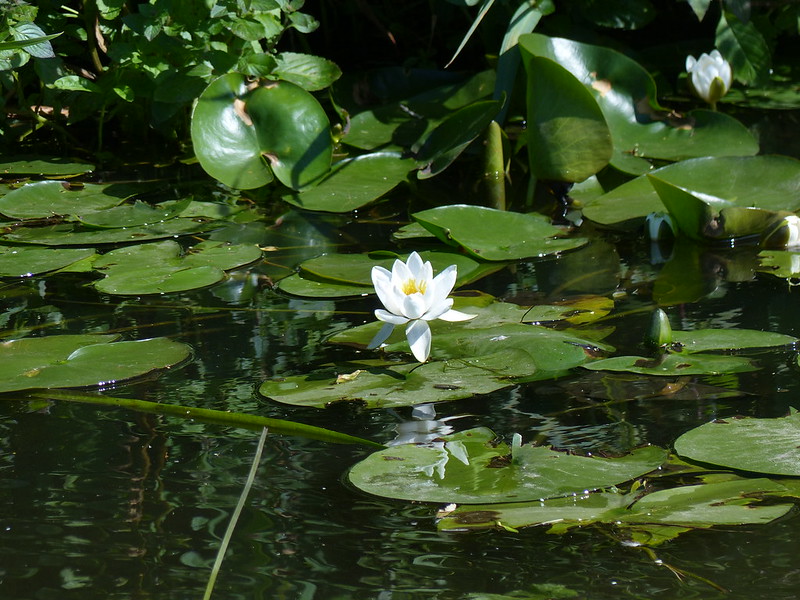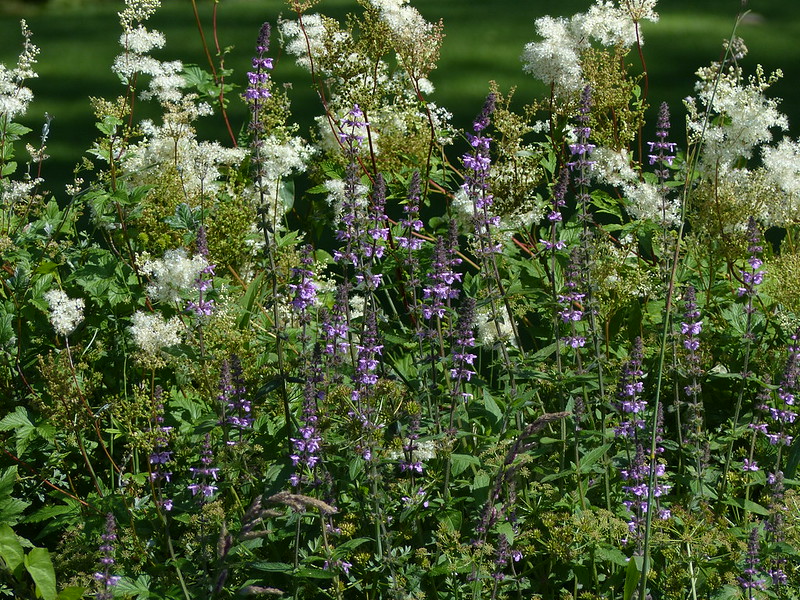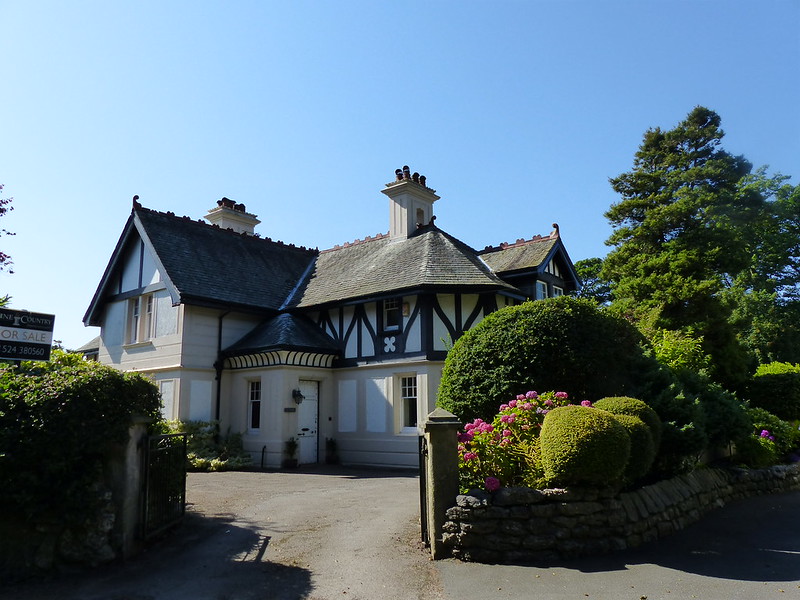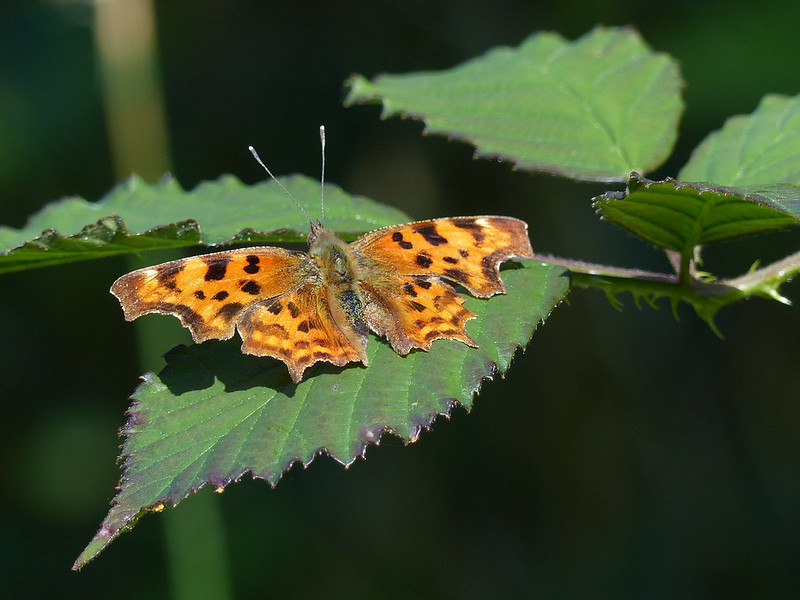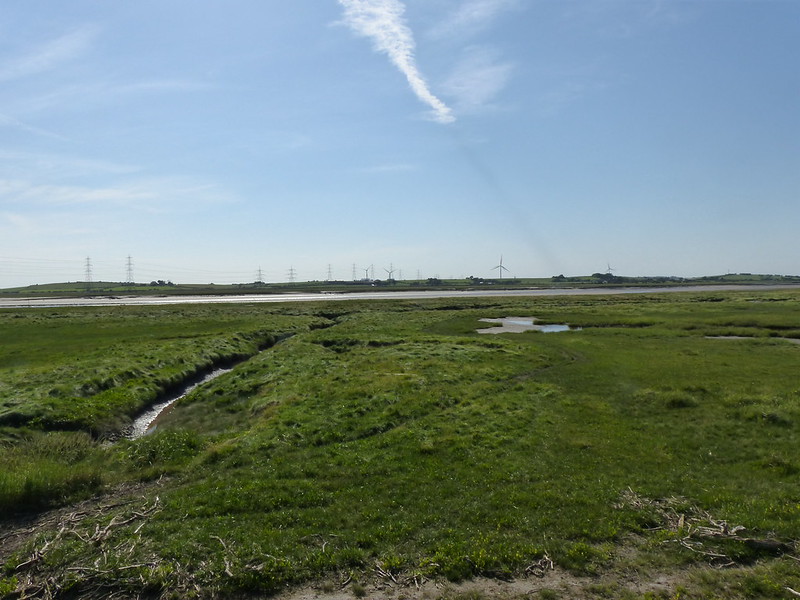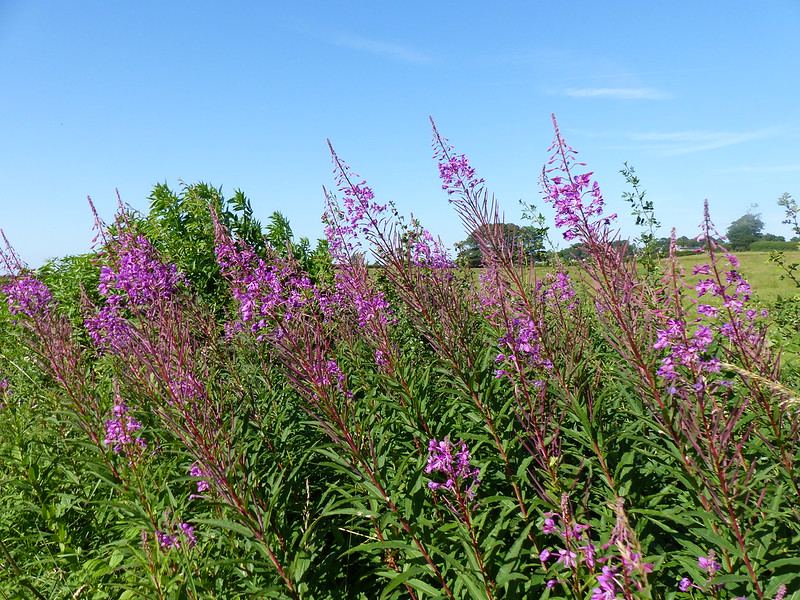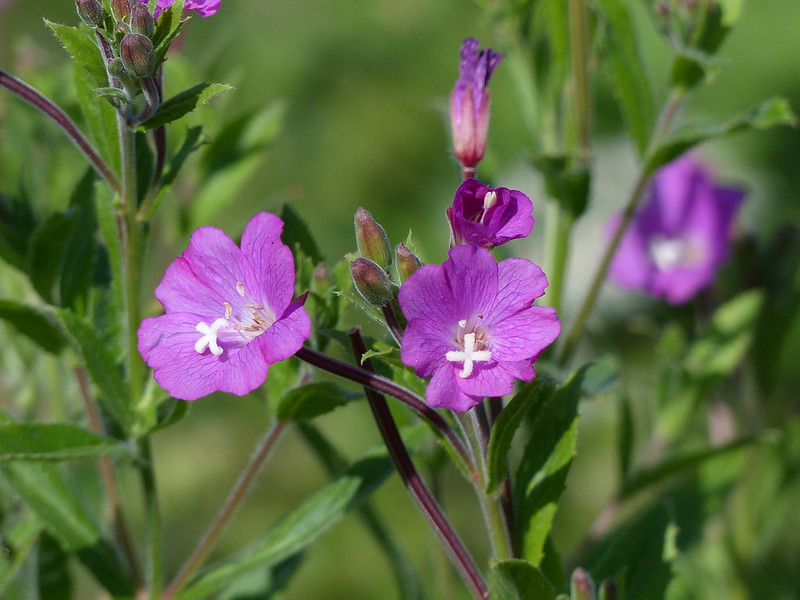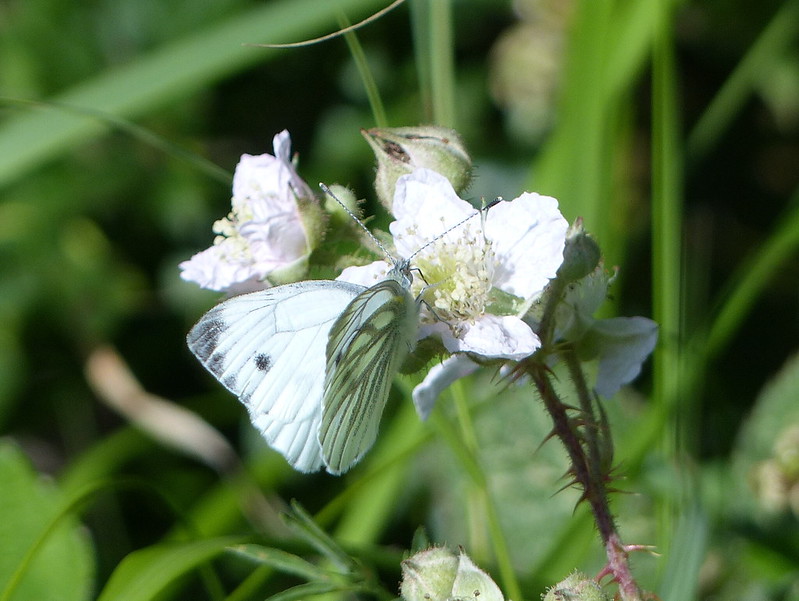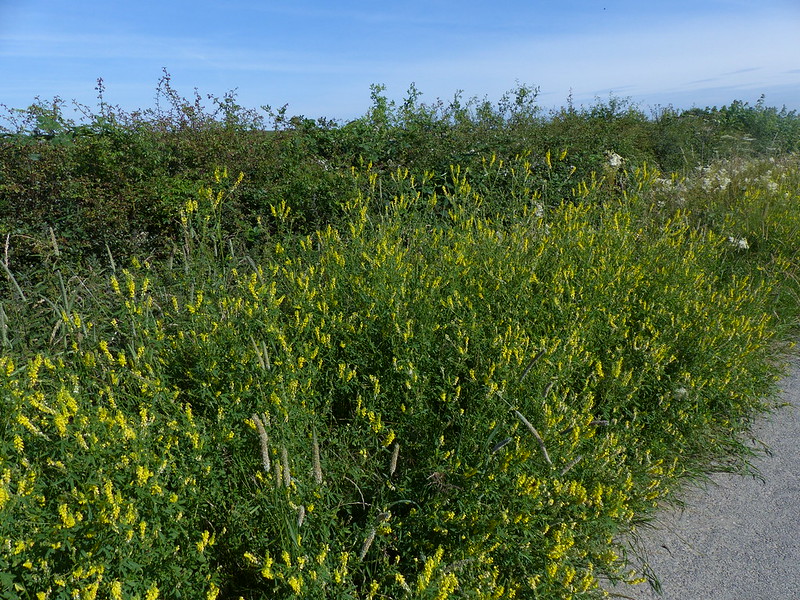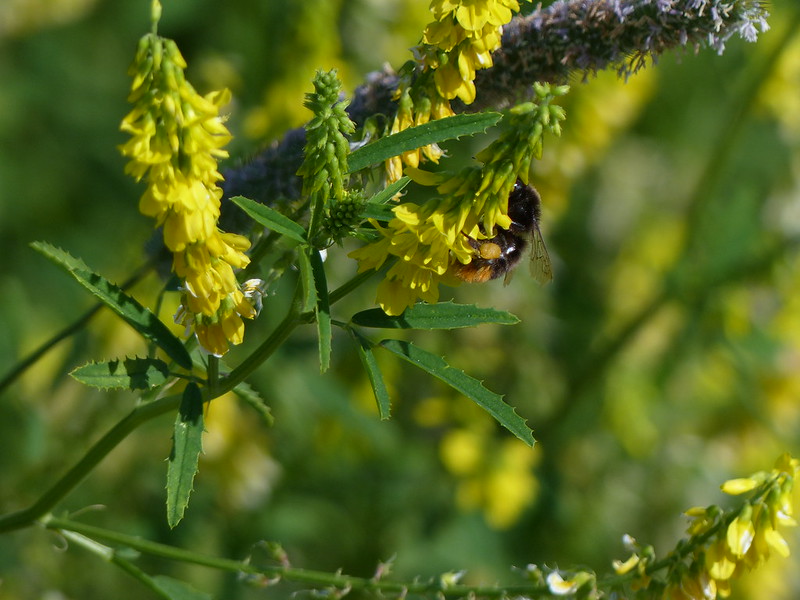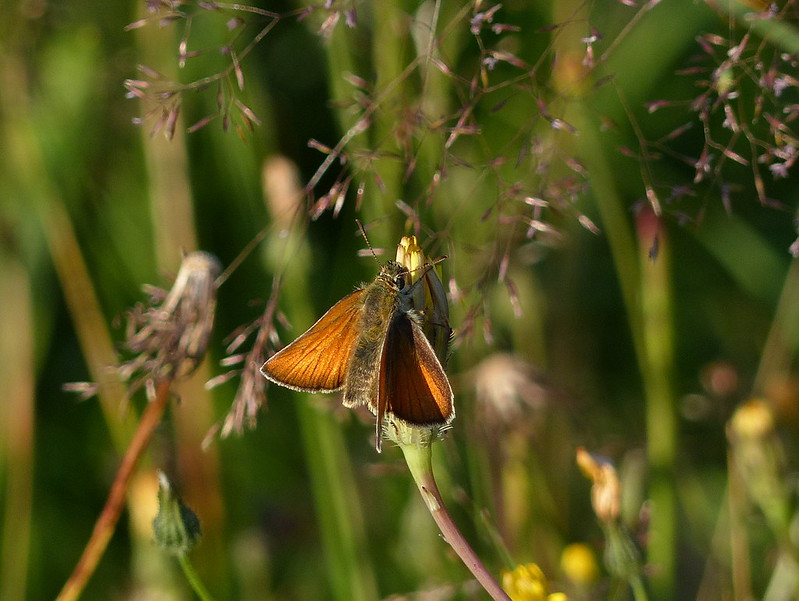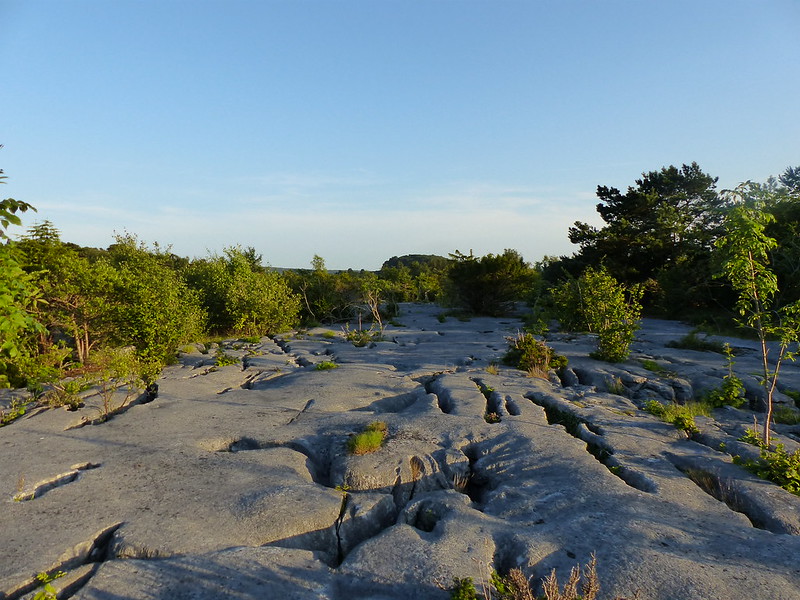And oranges, greens, browns, purples, yellows….
Almost a proper post-work walk this one, since it was the evening of the last day of the summer term. I was out a little earlier than I often am, which meant sunshine for a change and lots of colour. I chose to go back to the Hawes Water and Gait Barrows area.
In the woods I followed a large wasp or hoverfly hoping to see it land. I lost it, but then spotted this apparently besieged beetle…
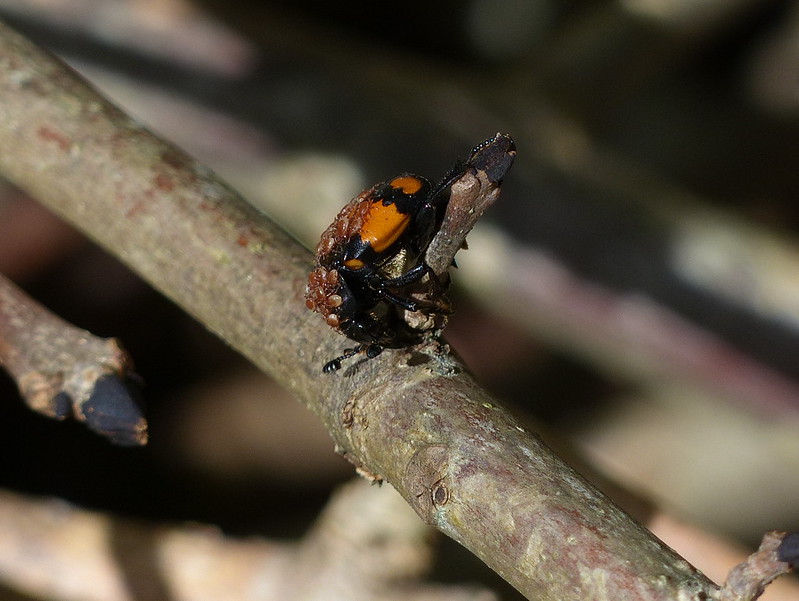
I think that this is a Common Sextant Beetle – Nicrophorus vespilloides. I thought that maybe the small brown mites covering the beetle – which I’m pretty sure was dead – were eating it, or had possibly even killed it, but it turns out that the truth is far more interesting and surprising…
“These [Sextant] beetles perform an important service in getting rid of carrion – dead small animals and birds. Males and females cooperate to bury this matter, by digging beneath the bodies to provide a food supply for their larvae.
Adults show an incredible maternal care for the larvae, something very unusual in the insect world. They fly in search of new sources of food at night and readily come to outside lights. They are often seen to be host to very tiny pinkish brown mites which are not parasites but feeders on moulds which would otherwise spoil carrion as a food source for the larvae. These mites use the beetles as a way of getting about. This beetle is commonly seen at light in gardens, often in company with a related, all black species, the black sexton.”
Source

I’ve had a bumper year for Common Lizards, which is great. With the sun shining I wasn’t at all surprised to find a few more on the boardwalk by Hawes Water.
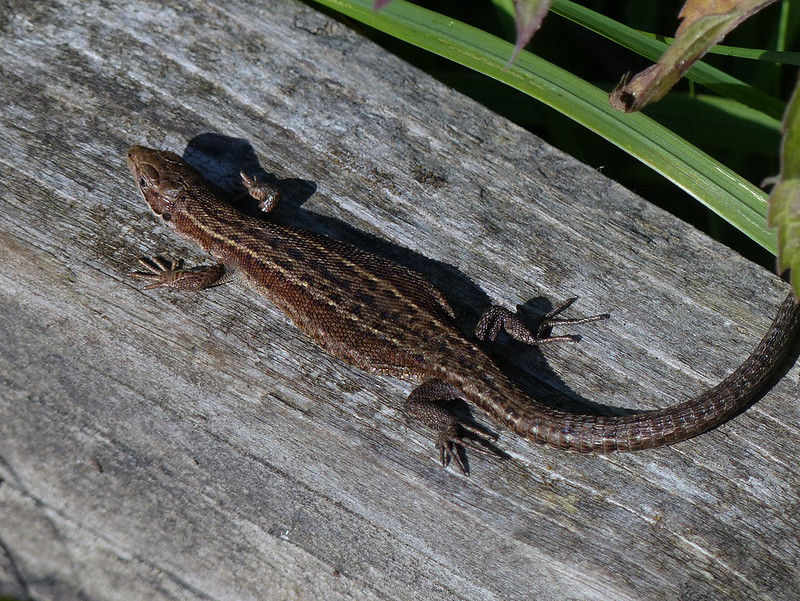
Unlike the ones I’ve seen at Foulshaw Moss, these all had their tails. They were very varied in colour.
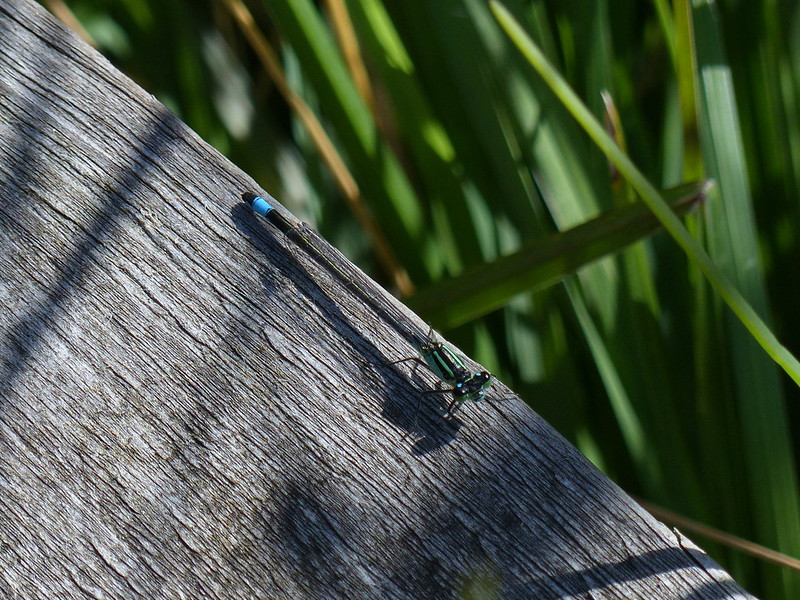
Blue-tailed Damselfly.
The lizards weren’t the only ones basking in the sun.

This one, it seems to me, is more blue than green, somewhat to my surprise.
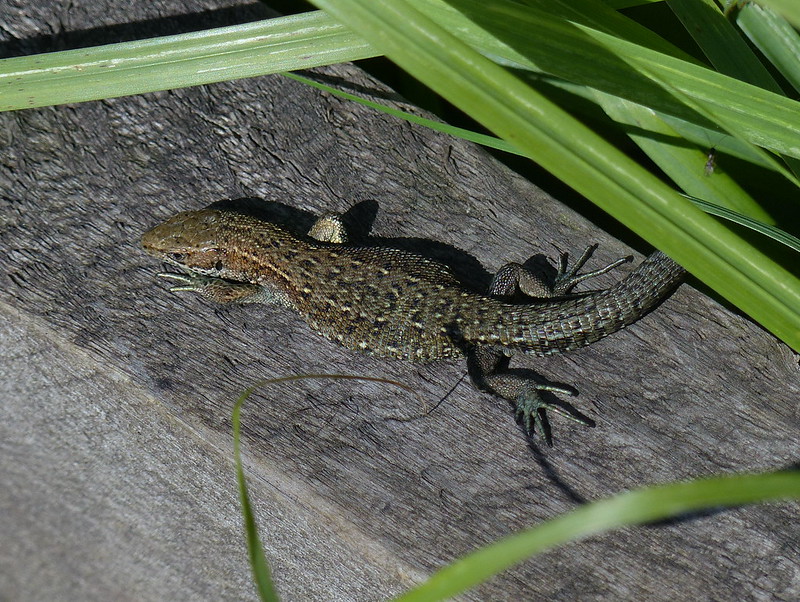
Three lizards this time, not a bad haul.

Hawes Water.
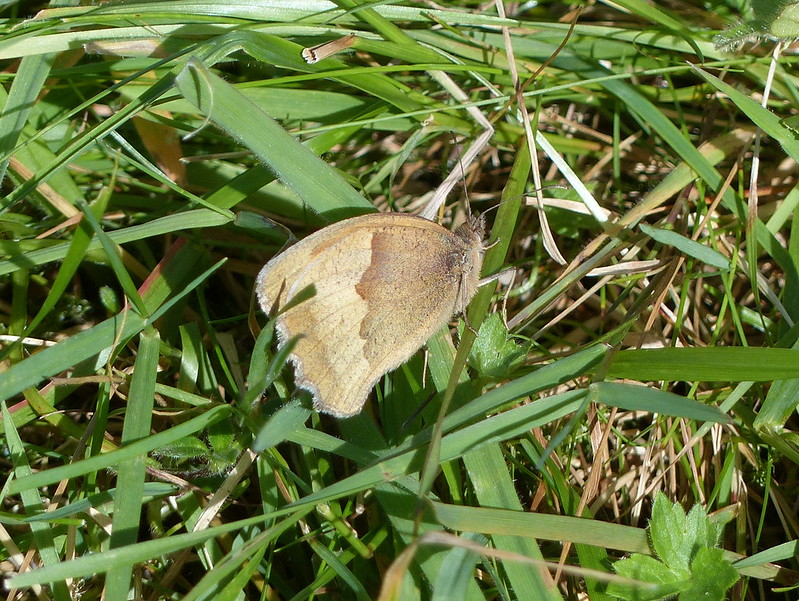
Meadow Brown.
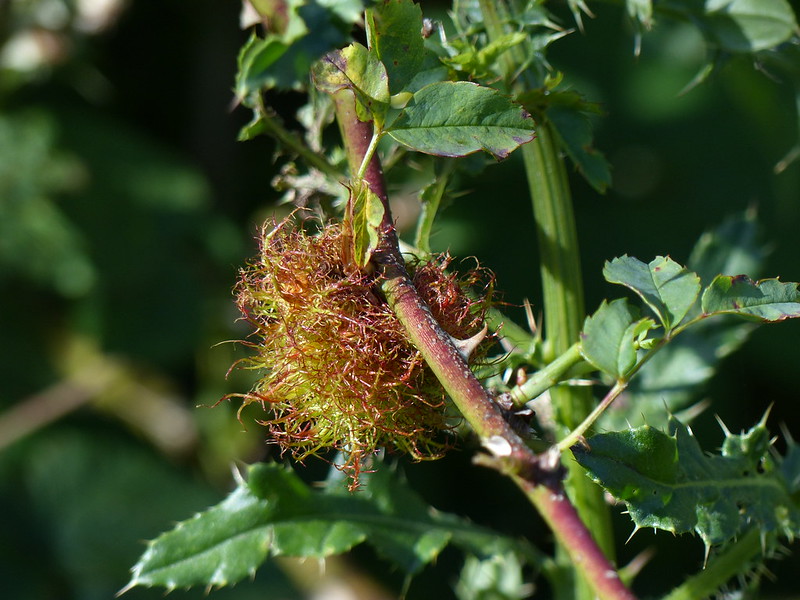
“The Robin’s Pincushion (also known as the ‘Bedeguar Gall’) is a gall caused by the larvae of a tiny gall wasp, Dipoloepis rosae. It is widespread and common, and can be found developing on the stems of wild roses during late summer, acquiring its reddish colour as it matures in autumn. The grubs inside the gall feed on the host plant throughout the winter and emerge in spring as adults. The adults reproduce asexually and only a tiny number are male.”
Source

Male White-tailed Bumblebee?
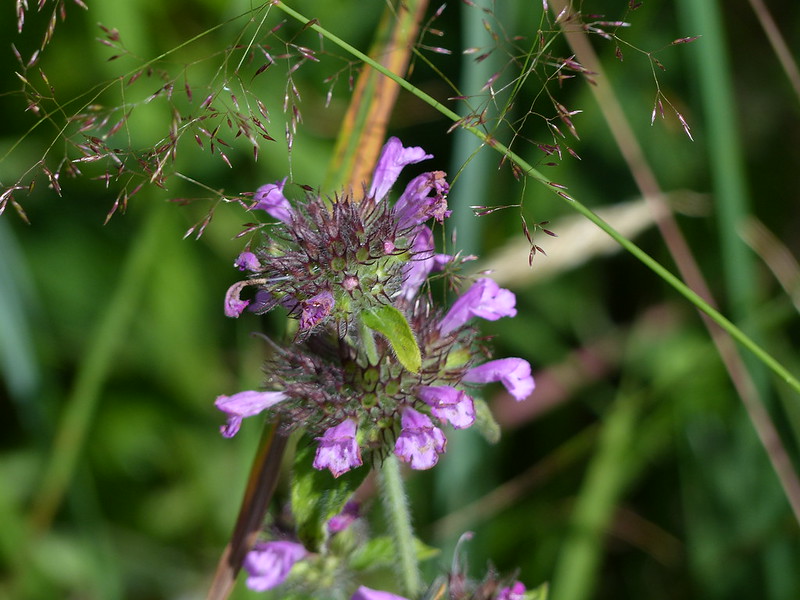
Wild Basil again (the same plant).
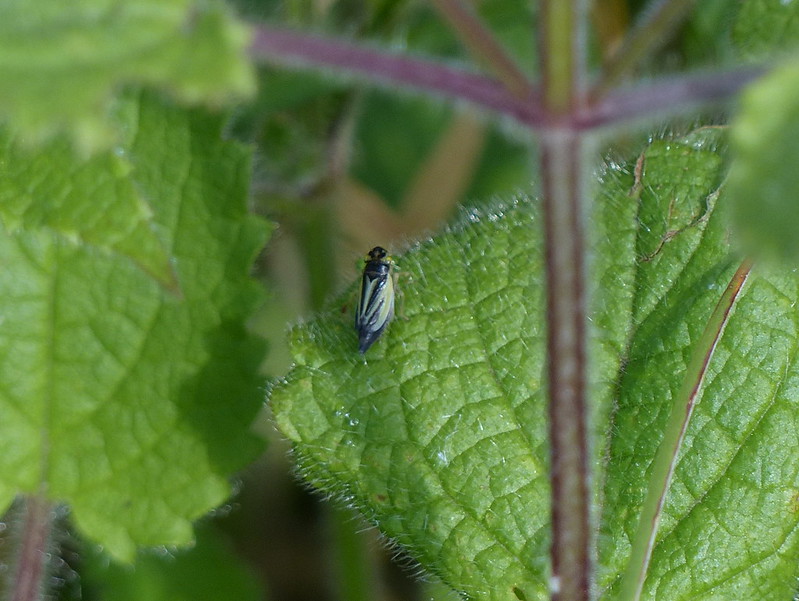
Froghopper – very different from the last one I saw.

Meadow Brown.

Mating Gatekeepers.
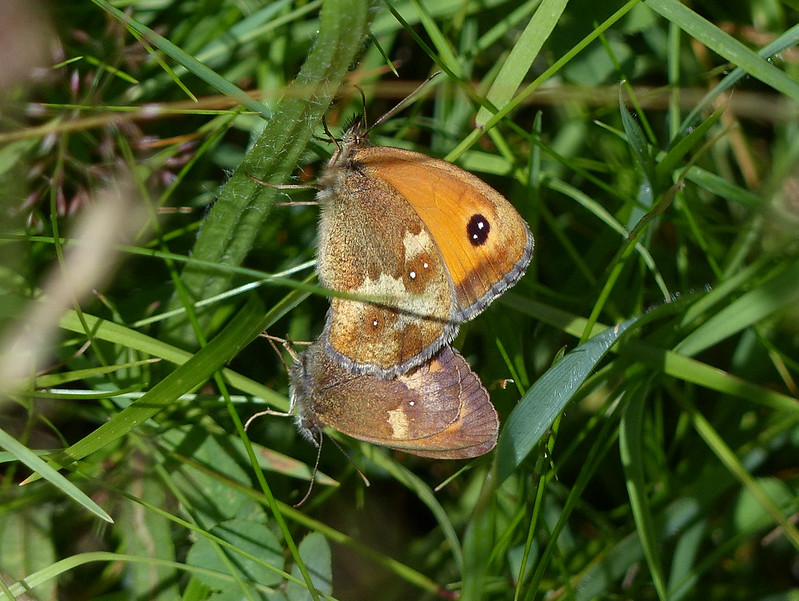

Betony.

Rather tired Common Spotted-orchid.
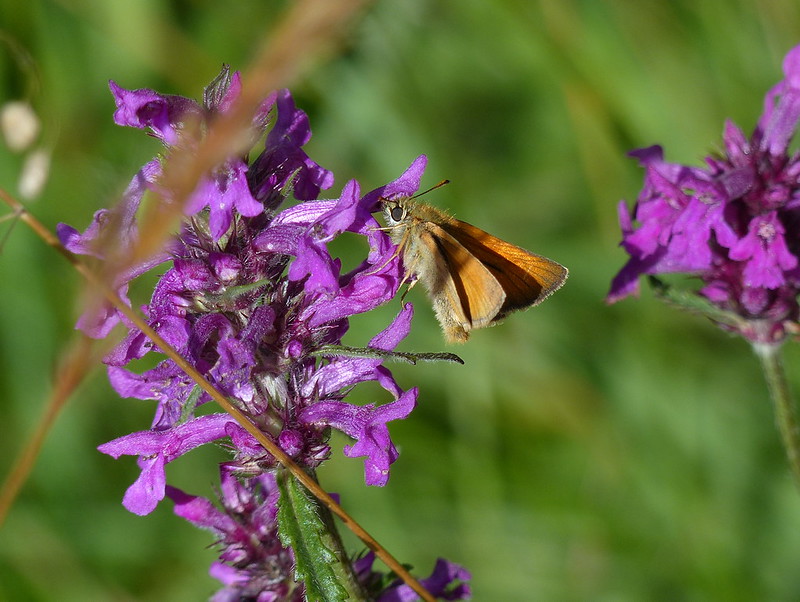
Small Skipper on Betony.
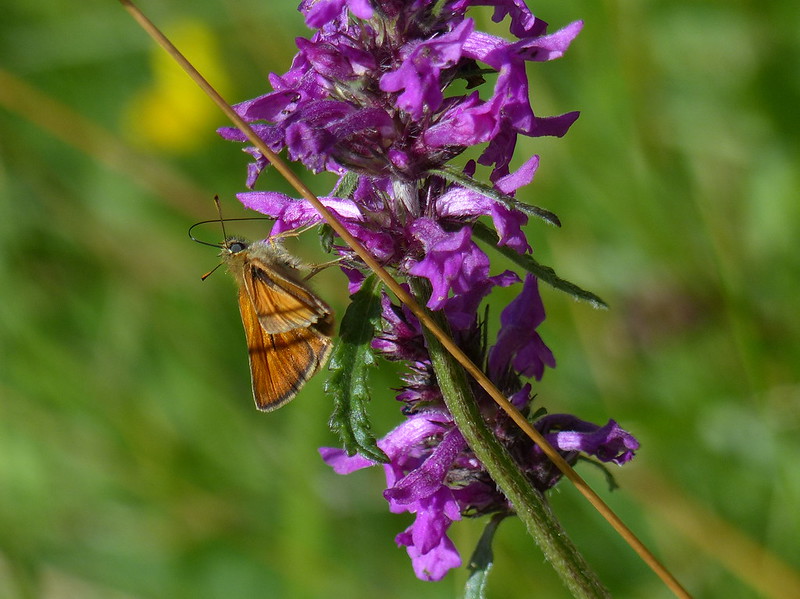
Look at that tongue!

I had a bit of a wander around an area of limestone pavement which I don’t think I’ve explored before. A surprisingly diverse range of plants seem to thrive in the grykes.

Hart’s-tongue Fern.
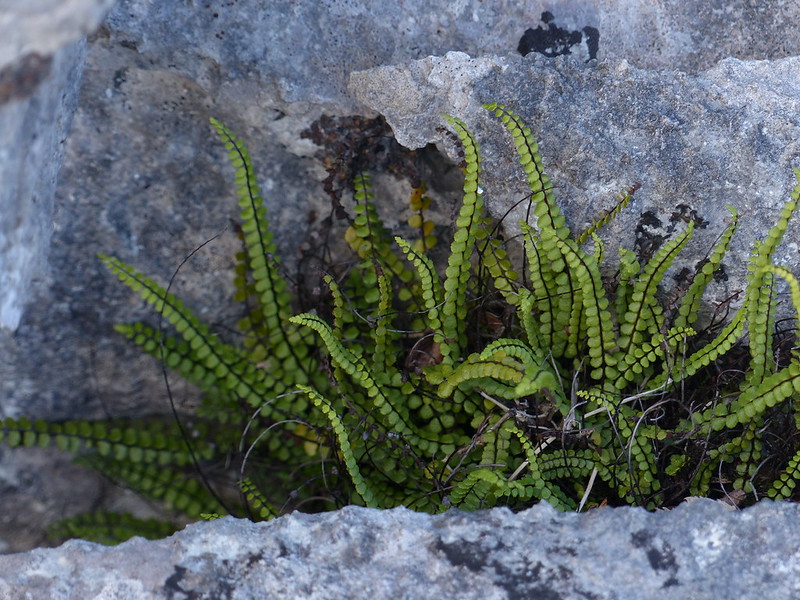
Maidenhair Spleenwort.
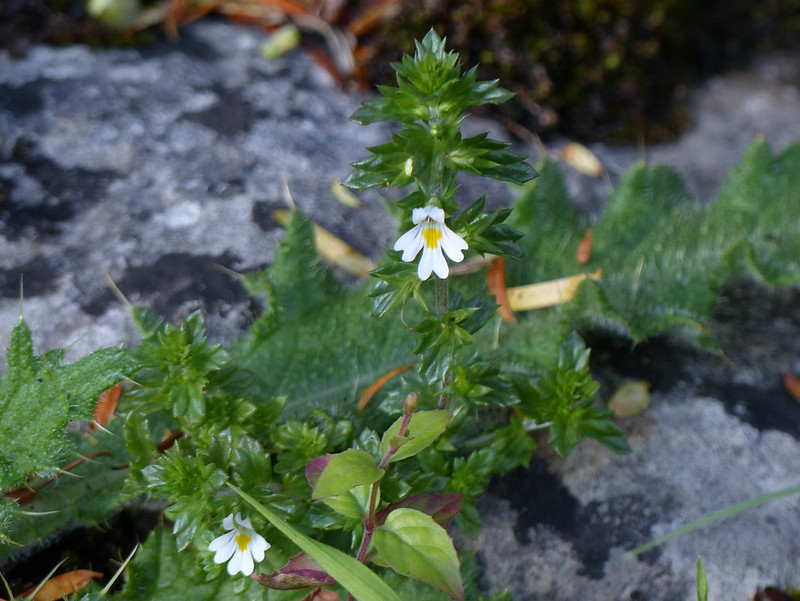
Eyebright.
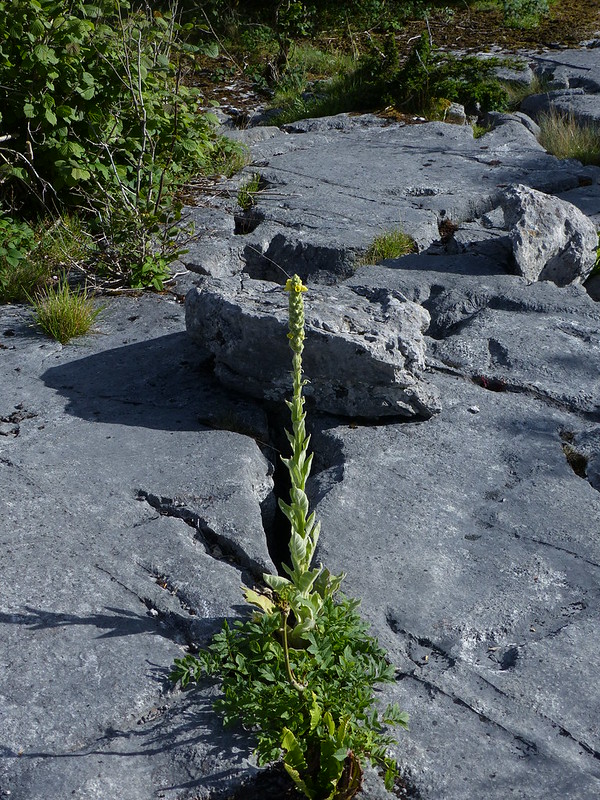
Great Mullein.
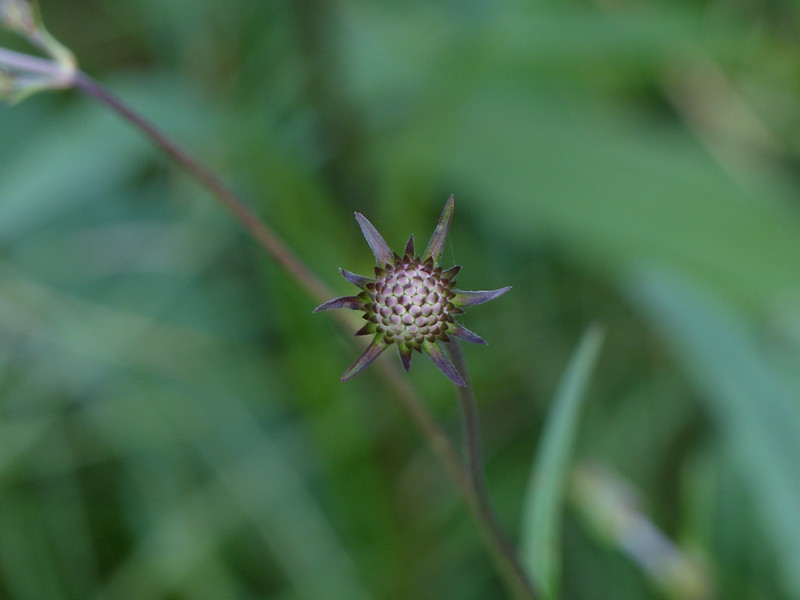
There were lots of these plants, growing in clumps, with strappy leaves, very dark stems and flowers which don’t seem quite open yet. I’ve had several ideas about their identity, but have eventually discounted them all.
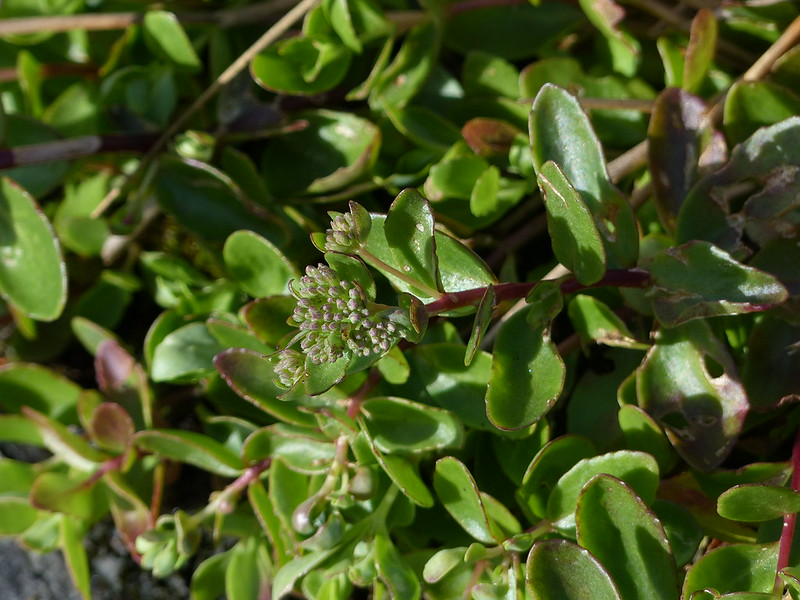
With it’s succulent leaves, this looks like some sort of stonecrop, but also remains a puzzle. Maybe when it’s flowering fully I’ll be able to identify it?
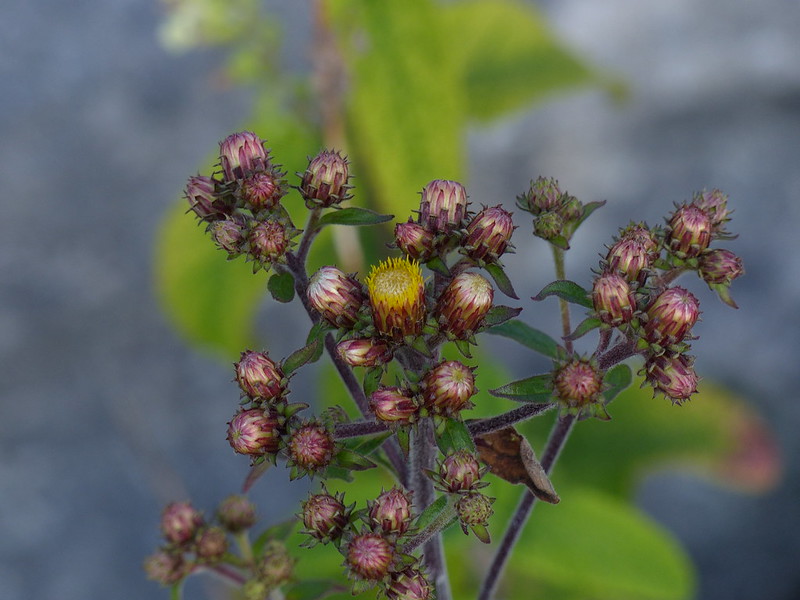
Ploughman’s-spikenard.
I was intrigued by the name of this daisy, so had a peek in ‘Flora Britannica’:
“True spikenard or ‘nard’, was an expensive, spicy perfume made from roots of a Himalayan plant…”
I’m not sure why Mabey says ‘was’, since a google search elicits many offers of expensive cure-all Spikenard essential oils.
There are, apparently, several references to Spikenard in the Bible, both Old and New Testament*.
Ploughman’s Spikenard is the poor-man’s English alternative. The “roots have a strong aromatic smell. They are sometimes dried and hung up in cottages as room-fresheners.”
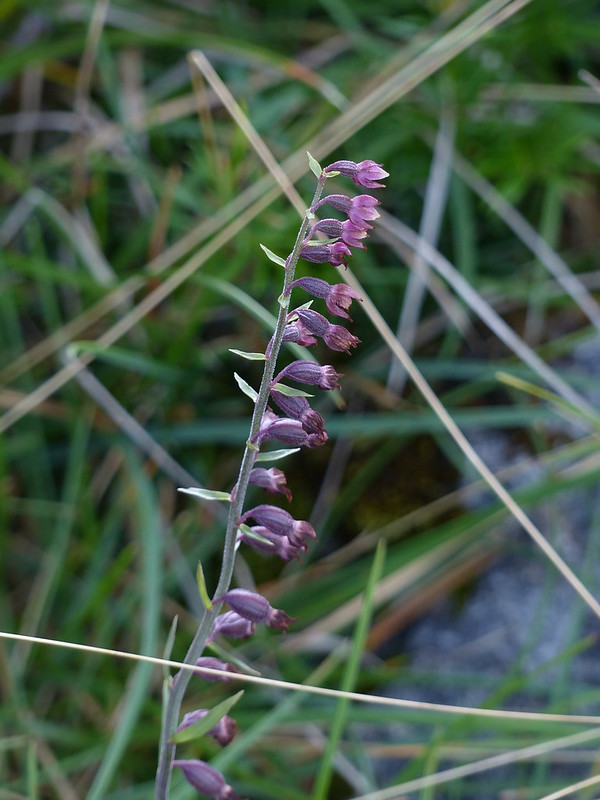
Dark Red Helleborine.
I’ve been wanting to find some of these since I moved to the area, without really being sure when or where to look. It’s part of the reason I was wandering around on the limestone pavement. I found several plants when I’d given up and was back on the path at the edge of the pavement. Sadly, they’d finished flowering and the flowers were dried brown husks. With one or two exceptions…

Now I know where to start my search next summer. Roll on.
* For example: “Thy lips, O my spouse, drop as the honeycomb: honey and milk are under thy tongue; and the smell of thy garments is like the smell of Lebanon. A garden inclosed is my sister, my spouse; a spring shut up, a fountain sealed. Thy plants are an orchard of pomegranates, with pleasant fruits; camphire, with spikenard, Spikenard and saffron; calamus and cinnamon, with all trees of frankincense; myrrh and aloes, with all the chief spices: A fountain of gardens, a well of living waters, and streams from Lebanon. Awake, O north wind; and come, thou south; blow upon my garden, that the spices thereof may flow out. Let my beloved come into his garden, and eat his pleasant fruits.”
From the King James version of the Song of Solomon. As ever, reliably weird. On which note – it’s probably only me that read this and heard: ‘Spikenard and saffron; calamus and cinnamon. Going up…’ If you get the reference and can hear the theme tune now then that probably means that you’re a child of the seventies and your life too was blighted by useless sit-coms. (‘Wigs and haberdashery, kitchenware and food. Going up…’)
